SD › NYC › Tours & Things to Do
Updated: April 13, 2022
By Santorini Dave
See Also
The 10 Best Tours in New York City
Food tours are one of the best ways to experience NYC culture and history. Highly recommended!
- Best Food Tours in NYC – Highly recommended!
- New York City Explorer Pass
The pass allows free access to the Empire State Building, the Museum of Natural History, The MET, the Statue of Liberty, the Intrepid Sea, Air & Space Museum, the Top of the Rock Observatory, and many more top attractions. It’s a great deal for visitors.- Brooklyn Food and Culture Bus Tour
Fantastic food tour. Come hungry!- Half-Day Pizza Tasting Bus Tour
If you love pizza this is a must. The best pizzerias in Queens, Brooklyn, and the Bronx.- Cupcake Tour of Greenwich Village
Super fun tour with 6 cupcake and gelato tastings.- Food Tour of Greenwich Village
Pizza, bagels, mac and cheese, bread, prosciutto, donuts, french pastries, cannoli, and chocolate. Great tour!- Disney on Broadway – Behind the Magic Experience
Both kids and adults absolutely love this one.- Tour of 9/11 Memorial and One World Observatory Ticket
Very well done and super informative.- 5.5-Hour New York City Tour
Excellent tour of Manhattan’s top sights.- Best of New York Cruise
2.5 hour boat cruise that takes in the 5 boroughs, 7 bridges, and 101 famous sights.- New York City Helicopter Adventure
Wonderful tour from above of New York’s iconic sights. If it’s in your budget, definitely worth it.- Skip The Line Tickets: 9/11 Memorial & Museum • Statue of Liberty • Empire State Building • One World Observatory • Top of the Rock Observation Deck • American Museum of Natural History • Museum of Modern Art (MoMA) • Guggenheim Museum • Intrepid Sea, Air & Space Museum
Sightseeing in Downtown and Civic Center
1. Statue of Liberty and Ellis Island Immigration Museum
One memorable boat ride takes in two iconic sites, “Lady Liberty” and Ellis Island, where 12 million immigrants sought her promise of freedom. A gift from France in 1886, the statue by sculptor Frederick Bartholdi seems small from afar, but up close her dimensions are impressive: she is 151 feet tall, wears a size 879 shoe and a has a 35-foot waistline! Three tours can be reserved in advance: grounds only, pedestal and lower promenade, or the steep climb inside the torch for the most thrilling vistas. The last two choices allow bypassing the long lines waiting to board boats. Reserve early; tours sell out months ahead. Boats continue from Liberty Island to Ellis Island, New York’s immigration entry point from 1892 until 1954. Visitors follow the path of newcomers who had to undergo quizzing and medical examinations before being granted entry. Almost half America’s population is descended from these immigrants. Exhibits include an introductory film, photos, videos, and oral histories. The American Family Immigration History Center offers the chance to look for ancestors on the passenger records of ships that landed here.
Ferries leave from Battery Park daily on the hour 9am-1pm.
Subway: 1 to South Ferry, 4/5 to Bowling Green; Bus: M15
Reviews: Statue of Liberty, Ellis Island
Skip The Line Tickets: Statue of Liberty & Ellis Island
2. 9/11 Memorial & Museum
Heartbreak, heroism, devastation and rebirth, all are movingly shown in this museum memorializing the terrorist attack on the World Trade Center on 9/11/2001. The underground location preserves remnants of the original twin tower foundations and the lofty spaces are studded with sad reminders such as twisted steel columns, a mangled fire truck, and the “Survivors Stairs,” one escape route that miraculously withstood the building’s collapse. Victims are remembered and the outpouring of support is shown in exhibits like a Lady Liberty statue festooned with tributes, a giant mural made by school children and a Tribute Quilt. The most graphic recreations of the day are in a separate wing that can be skipped if too painful. This wing also includes the events at the Pentagon and the story of Flight 93. Audio and printed guides can be downloaded from the museum website. Three films are shown, including Rebirth at Ground Zero, detailing the area’s renewal, heartening progress that is evident everywhere in the area, most notably in the stunning new Oculus, a $4 billion transportation and shopping hub just outside the museum. The actual 9/11 Memorial, located in the footprints of the Twin Towers nearby, consists of two enormous reflecting pools with 30-foot waterfalls cascading down all sides.
Sunday to Thursday, 9am-8pm, last entry, 6pm; Friday, Saturday 9am-9pm, last entry, 7pm; Memorial daily 7:30am-9pm. Free
Subway: E to World Trade Center, A/C/1/2/3 to Chambers Street. Bus: M5/20.
Reviews
Skip The Line Tickets: 9/11 Memorial & Museum
3. One World Observatory
High tech wizardry adds to the dazzling views from the city’s newest observatory atop One World Trade Center, the tallest building in the Western Hemisphere. Popularly known as the Freedom Tower, the recently completed 102-story skyscraper greets visitors heading for the elevators with a wall of talking panels where workers tell the story of the construction and a cavern-like passage through the foundation of bedrock. During the 60-second ride to the top, elevator walls present an ingenious floor-to-ceiling depiction of the city rising from forest to today’s metropolis. At the 102nd floor, a wall of close-up city scenes teases until photos give way to windows and city panoramas. These are different from midtown views because of the proximity to New York’s harbor, rivers and bridges, and downtown skyscrapers. The Sky Portal, a 14-foot circular dish in the floor, intrigues with views of real-time action on the street far below. There’s some commerce here—a sales pitch for I-pad rental guides, a restaurant on the 101st floor and a gift shop in the center of the main 360-degree viewing area on the 100th floor. None of that diminishes the views.
Daily 9am-8pm (last ticket sold 7:15pm), summer hours to 10pm (Last ticket sold 9:15pm). Enter from West Street.
Subway: E to World Trade Center, A/C/1/2/3 to Chambers Street; Bus: M5/20
Reviews
Skip The Line Tickets: One World Observatory
4. Federal Reserve Bank of New York Museum
The highlight of this informative one hour tour explaining our banking system is a visit to the world’s largest store of gold, resting in a concrete bunker five floors underground. The 308 billion gold bars in this vault, weighing about 6400 tons, are an impressive sight. They do not belong to the U.S. but are stored as a service to some 36 countries that do business with our Federal Reserve System. The 1924 building is deliberately fortress-like outside to build confidence in its security, but the inside is far from austere, adorned with intricate ironwork and vaulted ceilings of Guastavino tiles. Another task for this bank is storing enough cash to serve New York ATM machines for one week, and to take out and shred worn bills. Visitors receive a bag of shredded cash as a souvenir. Tour times are posted online 30 days in advance and they are snapped up as soon as posted. To be sure of a place, go online at 9am Eastern time exactly 30 days before you hope to visit.
Tours Monday to Friday, 1pm and 2pm. Free
Subway: 2/3/4/5 to Wall Street. Bus: M5
Reviews
5. Alexander Hamilton U.S. Custom House and Smithsonian National Museum of the American Indian
The 1907 U.S Customs House, a National Historic Landmark and one of New York’s most masterful Beaux Arts buildings, has kept its grandeur while serving a new purpose as home to the Heye Center of the Smithsonian’s American Indian Museum. Befitting a great seaport, the building by Cass Gilbert was built to impress, with a three-story rotunda surrounded by full height Corinthian columns, a domed ceiling of Guastavino tiles and a mural of New York Harbor by Reginald Marsh. The Four Continents, sculptures by Daniel Chester French, are at the top of the lefty entrance steps. When Customs headquarters moved to the World Trade Center in 1971, restoration kept the historic features while designing galleries surrounding the rotunda. They hold a permanent exhibition Infinity of Nations featuring 700 masterworks from native cultures of the Americas and two changing exhibit spaces. A downstairs auditorium presents music and dance performances, films, and talks. Ask at the information desk for tour schedules.
Daily 9am-5pm, Thursday to 8pm. Free
Subway: 4/5 to Bowling Green, 1 to South Ferry; Bus: M5/15/ 20.
Reviews
6. Brooklyn Bridge
For unforgettable views and photographs of lower Manhattan’s dazzling skyline, take the 1.3 mile Brooklyn Bridge walkway above the East River from Manhattan to Brooklyn. When it was completed in 1883 after 16 years of work, this was a wonder of the world – the longest suspension bridge and the first to be built of steel. The walkway is the best way to appreciate the magnificent cable work. Each cable contains over 3500 miles of wire. The Gothic double arches were designed as gateways to the newly united cities. The walk can take anywhere from 30 minutes to an hour, depending on the pace and the number of photo stops. Bikes are also permitted on the walkway. Try not to choose a windy day; it is always breezy on the lofty bridge.
Open 24 hours. Free
Subway: 4/,5 or 6 to Brooklyn Bridge/City Hall; Bus: #5.Views are even better facing the city coming from Brooklyn, but it is a long walk from the A or C train High Street station to the entry.
Reviews
7. City Hall
New York’s seat of government since 1812, the French Renaissance-style City Hall is one of the oldest and grandest halls in continuous use and a rewarding stop for visitors who can fit in the free Wednesday tours. Recently restored to its original luster, the building boasts a dramatic two-story rotunda circled by a cantilevered marble staircase rising to the second floor, where 10 Corinthian columns support the coffered dome and skylight above. The mahogany paneling and historic furnishings of the City Council chamber have been burnished, and the ceiling murals and plaster conserved. The Governor’s Room, a reception hall, is a virtual museum, with a portrait gallery of America in the 18th and early 19th centuries and more historic furnishings, including a desk once used by George Washington. The building stands in a leafy park, a favorite haven for office workers, with a long history of its own. It was once known as The Commons, a pasture ground for livestock, and has served as a parade ground, a public execution site, and as home to a debtor’s prison, an art museum, and a post office. By guided tour only.
Tours Wednesdays at 12pm. Register 10am to 11:30am at NYC tourism kiosk, southern end of City Hall Park, east side of Broadway at Barclay Street. Free
Subways 4/5/6 to Brooklyn Bridge/City Hall; Bus, #5
Reviews
8. Chinatown
With grocery stands piled high with mysterious vegetables and dried foods, tempting bakeries, tea emporiums, chopstick shops, a Buddhist temple and dozens of cafes, New York’s noisy, bustling Chinatown is a great neighborhood for exploring and dining. Start on Canal Street to see the intriguing food stalls, and a stop at Kam Man supermarket, laden with tonics, teas, jellies, ginseng and a downstairs stocked with kitchen and cookery items. Turn onto Mott Street, the main artery, to check out the souvenir stands selling slippers, back scratchers, dolls, toys and bamboo plants, which the Chinese consider good luck. Stop into the Eastern States Buddhist Temple at #64 to see offerings piled high on altars and over 100 golden Buddhas gleaming in the candlelight. Choose among the many restaurants for a Chinese treat, then turn onto Bayard Street for the Chinatown Ice Cream Factory’s unique homemade flavors for dessert. Stay on Bayard to Columbus Park for a chance to see residents practicing Tai Chi.
Subway: 6/N/R trains to Canal Street; Bus: #103
Reviews
9. Little Italy
On a balmy evening, there’s nothing pleasanter than the music, delicious aromas and fabulous desserts found in abundance on lively Mulberry Street, the heart of Little Italy. This narrow lane with festive lights overhead, and the neighboring blocks between Canal Street and Broome Streets, are lined with old-fashioned Italian restaurants. Shops offer anything from statues of the Saints to cooking equipment to kitsch, like buttons saying “Kiss Me, I’m Italian.” Chinatown has overtaken a lot of the old neighborhood but Grand Street between Mulberry and Mott streets remains home to Italian merchants who have been here for a century, places like Piemonte Homemade Ravioli Company, and two havens for cheese lovers, DiPalo’s Dairy and Alleva Dairy. Don’t miss Ferrara, a bakery that has been dispensing legendary cannolis and other pastry treats since 1892. From mid to late September, the annual Feast of San Gennaro, a salute to the patron saint of Naples, fills Mulberry Street with parades, music and Italian food galore. On Saints Day, September 19, a statue of San Gennaro is carried from the Church of the Most Precious Blood in a colorful procession through the neighborhood.
Subway: 6/N/R trains to Canal Street; Bus: #103
Reviews
10. Lower East Side Tenement Museum
This “museum” is an actual tenement building from 1863, and offers the fascinating opportunity to visit the restored apartments and shops of some of the real families who lived here, struggling to make their way in a new land. Guided tours from one to two hours follow themes. Shop Life includes an 1870s German saloon, a kosher butcher and a 1930s auctioneer. Hard Times visits the homes of the German-Jewish Gumpertz and the Italian Catholic Baldizzi families. One tour focuses on Irish Outsiders. Check the website and reserve ahead to ensure your choice of tours and times. The museum also gives excellent walking tours of the Lower East Side neighborhood. All tours leave from the Visitor Center at 106 Orchard, across the street from the museum. Allow time here for the free introductory film, an exhibit opening in 2017 interviewing later generations who lived here, and to browse the shop, which has the one of the city’s best selection of New York souvenirs and books.
Daily 10am-6:30pm, Thursday to 8:30pm.
Subway: B/D to Grand Street, F to Delancey Street, J/M/Z to Essex Street, Bus: M15
Reviews
11. The Museum at Eldridge Street
Rich with stained glass, brass chandeliers, marbleized wood paneling, and fine hand carving, this National Historic Landmark synagogue completed in 1887 was the first great house of worship built by Eastern European Jewish immigrants and was intended to show off their success in America. As early settlers moved on from the Lower East Side, however, the building languished. Pigeons were roosting in the balcony when a 20-year restoration began. Over 18 million dollars later, it reopened in 2007, returned to its former beauty and later augmented by a magnificent new stained glass window by Kiki Smith. The restoration has won numerous awards. Guided tours offered every hour are not only a history of the synagogue but of its neighborhood and the early residents. The museum schedules many special programs and concerts as well as walking tours of the Lower East Side.
Sunday to Thursday, 10am-5pm, Friday to 3pm. Closed on Saturday.
Subway: F to East Broadway, B/D to Grand Street, 10 minute walk to synagogue; Bus: M15/15 Select, 5 minute walk
Reviews
12. Museum of Jewish Heritage – a Living Memorial to the Holocaust
A symbolic six-sided waterfront building with views of New York Harbor and the Statue of Liberty is the striking home to a museum dedicated to Jewish life before, during, and after the Holocaust. While it tells the story of the brutal loss of 6 million lives at the hands of the Nazis, the core exhibit also shows the broad tapestry of Jewish life in the 20th and 21st centuries, telling of a vibrant culture with a collection of over 800 historical and cultural artifacts including clothing and textiles, toys, musical instruments, Judaica, and some 200 photographs. To ensure that new generations do not forget, original documentary films chronicle the memories of Holocaust survivors and include testimonies from Steven Spielberg’s Survivors of the Shoah Visual History Foundation. Excellent changing exhibits add interest.
Sunday to Thursday 10am-5:45pm. Wednesday to 8 pm. Friday 10am-5pm mid-March to mid-November, 10am-3pm mid-November to mid-March.
Subway: 4/5 to Bowling Green; Bus: M20 stops in front of the museum.
Reviews photo credit
13. Trinity Church and St. Paul’s Chapel
From the sculptured bronze doors to some of the oldest stained glass in the U.S., Trinity is an exceptional church and an important part of New York history. It is the third house of worship on the site. The first went up soon after it was chartered by William the Third in 1697, the first Anglican (now Episcopal) church in the New World. To serve a fast-growing population, St. Paul’s Chapel was built in 1766 and remains the city’s oldest ongoing original congregation. George Washington worshipped here after his inauguration in 1789. When the original Trinity was lost to fire in 1776, it was replaced with a second building in 1790. Washington, Alexander Hamilton, and John Jay were among its worshippers. When structural problems developed, architect Richard Upjohn designed this grand New Gothic version consecrated in 1846 with a 281-foot steeple that was the city’s tallest structure for many years. Music is an important part of Trinity’s tradition. The renowned choir can be heard at services and free concerts scheduled in both churches, often accompanied by the Trinity Baroque Orchestra. The graveyard beside the church is the resting place of Alexander Hamilton and other prominent early citizens.
Trinity Church daily 8am-6pm; St Paul’s Chapel daily 10am-6pm. Free
Subway to Trinity: R/1 to Rector Street, 2/3/4/5 to Wall Street. Bus: M5. Subway to St. Paul’s: A/C/E to Chambers Street, 6 to Brooklyn Bridge/City Hall, Bus: M5
Reviews: Trinity Church, St. Paul’s Chapel
14. Federal Hall National Monument
A larger-than life bronze statue of George Washington presides atop the stairs of the columned 1842 Custom House, now a museum and memorial to the site where Washington was sworn in as the first President in 1789, and where the first Congress and Supreme Court convened. Off the grand rotunda inside one of the city’s finest Greek Revival buildings are exhibits about the inauguration, the actual Inaugural Bible, and models of the original City Hall and Federal Hall. Start at the Visitor Center to watch an introductory video, and for times of the free 30-minute Ranger-led tours. This is also the place to learn about the other National Park sites in New York City.
Monday to Friday 9am-5pm, also Saturdays Memorial Day to Labor Day. Free
Subway: 2/3/4/5 to Wall Street; Bus #5
Reviews
15. Battery Park City and Brookfield Place
Some of the city’s most scenic strolls are found in this modern waterfront neighborhood, a 92-acre complex with miles of landscaped, art-studded paths for strolling or biking with prime Statue of Liberty views. At the center of the residential area is Brookfield Place (formerly known as the World Financial Center), four business towers anchored with a soaring glass-domed Winter Garden atrium that hosts frequent art installations and free entertainment. Brookfield has a host of upscale shops and many dining places as well as a big tranquil outdoor waterfront plaza overlooking a marina of yachts and sailboats, a great spot for watching the sunset over the Hudson. This relatively new part of the city began in the 1960s, partially on landfill created from the construction of the original World Trade Center, and has grown to become home to some 10,000 residents. The waterside walkways continue to Rockefeller Park to the north, Battery Park and beyond to the south.
Subway: 1/2/3 or A/C to Chambers Street. Walk west along Chambers and cross the West Side Highway into BPC. Bus: M20
Reviews
16. South Street Seaport
Once the country’s busiest harbor, bustling with the ships and commerce that helped make New York a mighty city, these cobbled streets are a chance to relive maritime history amid the pleasures of today. The heart is Pier 16, the “street of ships,” where six vintage vessels are docked, some open for boarding. These include the 1907 lighthouse ship Ambrose, and the newly restored 1885 Wavertree, one of the last large sailing ships built of wrought iron. Visitors can actually go for a sail on the Pioneer, an 1885 four-masted schooner. The Bowne Printshop on Water Street tells another kind of history with demonstrations of early letterpress printing and 19th century crafts such as woodcarving. The Seaport Museum has changing displays and offers informative walking tours. The museum and some of Seaport shops and cafes are still recovering from the damage of Hurricane Sandy in 2012, but major improvements are ahead with the redevelopment of Pier 17 and the 2017 openings of gourmet restaurants from noted chefs Jean George and Momofuku’s David Chang. Also ahead are a seafood-themed marketplace in the old Tin Building, a luxury movie and dining complex, and new shops including a major bookstore.
Pier 16 and Museum, Wednesday to Sunday, 11am-5pm; Bowne Printshop, daily 11am-7pm.
Subway: A/C/2/3/4/5 to Fulton Street; Bus: M15 stops at the seaport.
Reviews
17. Staten Island Ferry
With unbeatable views of New York harbor, the Statue of Liberty, Ellis Island, and the skyscrapers and bridges of Lower Manhattan, this 25 minute, five-mile sail to Staten Island is one of the world’s best free rides. At the Whitehall Terminal at the tip of Manhattan, a 75-foot-high entry hall greets riders with panoramic views of the downtown skyline. On fine days a rooftop viewing deck with benches is an excellent place to relax while waiting for the next boat. The ferry is basic transportation to Manhattan for residents of Staten Island, so avoid morning and evening rush hours when commuters crowd the terminal. This is one city attraction that is quieter on weekends.
Departing daily every half hour, every 15 minutes weekdays from 7am-9am, 5pm-7pm. Free
Subway: 1 to South Ferry, Bus: M5/15/15 Select/20
Reviews
18. Governors Island
New York’s newest summer playground, this former historic military base just a ten-minute ferry ride from Manhattan has been transformed to offer open lawns, bike and walking paths, high hills to climb up or slide down, lively festivals and history tours, all with peerless city views. The 172-acre island has two parts. Governors Island National Monument under the National Park Service preserves 22 acres of the fort that operated from 1794 to 1966. Rangers offer tours of Castle Williams, America’s first circular fortification, and the star-shaped Fort Jay, which also served as a prison for Confederate prisoners. Themed tours cover topics like artillery, geology, and aviation, as well as a guided walk around the island The rest of the 150 acres as a park managed by The City of New York through the Trust for Governors Island. Along with growing recreational facilities, the park hosts weekend events from art shows and concerts to vintage baseball games and festivals featuring anything from poetry to unicycles. Bike rentals and food trucks are available.
Memorial Day to late September.
Ferries from Manhattan Marine Maritime Terminal, Monday to Friday 10am to 5pm; Saturday, Sunday, holidays to 5:30pm. Last ferries from the island, 6pm weekdays, 7pm weekends.
Subway: 1 to South Ferry, R to Whitehall Street, 4/5 to Bowling Green; Bus: M15
Reviews
Sightseeing in Chelsea, SoHo, Tribeca, Greenwich Village
19. The High Line Park
Get a lofty new perspective on the city from its most ingenious park, an abandoned overhead freight railway line transformed into an elevated mile-and-a-half walkway 30 feet in the air, surrounded by lush greenery. Running roughly from 13th to 34th streets on the city’s far west side, this is a great stroll with Hudson River and city vistas and highly original landscaping reflecting the wild plants that grew on the neglected rail beds. Along the way are changing art installations, videos, and places to take off your shoes and wade in an inch-high pool or to relax on a chaise. Several choice viewpoints frame the old neighborhood as wells as the new buildings the High Line has inspired. Many special events are scheduled from tai chi and concerts to evening star gazing; check the website for schedules. Free guided tours detail the unusual story of the High Line. Food and treats are available at several stops. A visit can mean a 30-minute walk or can fill several hours. The new Whitney Museum is located at at the High Line’s southern end. There is no overhead shelter, so remember hats and sunscreen in summer.
June to September, 7am-11pm,April-May, October-November, 7am-10 pm., December to March 7am-7pm; free 75-minute guided tours Saturdays at 10am and Tuesdays at 6:30pm May to October. Free
Subway: A/C to 14th Street; Bus: M14 westbound
Reviews
20. Whitney Museum of American Art
Architect Lorenzo Piano’s cantilevered glass creation between the High Line and the Hudson River is the dramatic new home for the Whitney, the only museum devoted exclusively to modern American art. Works by both established and emerging artists are among the 21,000 in the museum’s growing permanent collection, shown in rotating exhibits on two spacious floors. Included are masters such as Jasper Johns, Alexander Calder, Claes Oldenburg, and Georgia O’Keefe, along with works given by Gertrude Vanderbilt Whitney, who founded the museum in 1931 and helped introduce young artists like Edward Hopper and Stuart Davis to the national art scene. The museum’s signature exhibition is the biennial survey of contemporary art, an invitational show of work produced in the preceding two years. Views of the river and the neighborhood from the museum’s many outdoor terraces are a unique feature.
Wednesday to Monday 10:30am-6pm, to 10pm Friday and Saturday September to June. Also open Tuesday July and August.
Subway: A/C to 14th Street; Bus: M14h west bound
Reviews photo credit
Skip The Line Tickets: Whitney Museum of American Art
21. Chelsea Art Galleries
This neighborhood boasts more than 300 contemporary art galleries, housed in striking quarters on the street or stacked in vertical “art mall” buildings where the elevator opens to a different gallery on every floor. Galleries first noticed the low-rent, high-ceilinged former warehouses in far west Chelsea in the 1990s, an area running roughly from 18th to 27th streets between 10th and 11th avenues. The opening of the High Line nearby brought more visitors, and most important galleries have a Chelsea location today. A few of the major names include Gagosian, Matthew Marks, The Pace Gallery, and Mary Boone, but the fun of browsing is finding your own favorites. Among the malls where many dealers are found at one address are 529 West 20th Street, 526 West 26th Street and 525 West 22nd Street. Weekend guides in city newspapers detail current gallery shows, or check the website above.
Most galleries open Tuesday to Saturday, 10am-6pm.
Subway: C to 23rd Street; Bus: M23 westbound
22. Rubin Museum
In this dramatic transformation of a former department store, a six-story swirling circular staircase around a central skylit atrium leads to galleries of rarely seen art from the Himalayas, mountainous Asian countries such as Nepal, Tibet, Bhutan, and Mongolia, as well as China and India. The museum opened in 2004 with a gift of more than 1000 works from the collection of founders Shelley and Donald Rubin. The holdings have grown to some 3200 objects from the second century to the present, riches that include intricate carvings, statuary of Hindu and Buddhist gods and goddesses, paintings, shrines, scrolls, jewelry, and textiles. The permanent exhibit, What Is It? Himalayan Art introduces the traditions and materials of this spiritual art. Upper floors hold changing exhibits. The Rubin offers a range of programs and films; the Café Serai serves foods from the Himalayan region.
Monday, Thursday, 11am-5pm, Wednesday, 11am-9pm, Friday 11am-10pm, Saturday, Sunday 11am-6pm. Closed Tuesday.
Subway: 1 train to 18th Street; Bus: M7/20.
Reviews photo credit
23. Meatpacking District
Grit meets chic in this neighborhood where slaughterhouses and butchers have given way to boutiques and bars favored by young, hip New Yorkers. The old industrial buildings and cobbled streets remain, even while dramatic changes take place in the area west of Ninth Avenue between Chelsea and the West Village. Development hastened with the opening of the High Line and continues with the arrival of the Whitney Museum. Upscale hotels and a host of restaurants and clubs have opened, and Fourteenth Street has become a mecca for high-end fashion names like Stella McCartney and Alexander McQueen. A section of Hudson River Park serves the area for recreation and summer concerts and further development is planned for Piers 57 and 54, which will inspire even more activity. Come to enjoy the amenities and to see firsthand how neighborhoods evolve in this ever-changing city.
Subway: A/C to 14th Street, Bus: M14 westbound/M11
Reviews
24. Washington Square Park and Greenwich Village
A campus green for NYU students, a family playground, a haven for chess players, and a stage for folk singers, musicians, and street performers, Washington Square is the heart of Greenwich Village and a chance to see many facets of New York at play. Named for the first president, a space once used as a potter’s field and execution site became a green parade ground for the militia in 1826, and was soon ringed with elegant homes, many of which are still standing on Washington Square North. It was redesigned as a park in 1870, centered by a grand fountain. The marble arch facing Fifth Avenue, and resembling Paris’ Arc de Triomphe, was designed by Stanford White and added in 1895 to commemorate the 100th anniversary of Washington’s inauguration. The park is an ideal starting point to explore the twisty lanes of Greenwich Village, filled with history and charm. Download a free self-guided tour here or here, or join the free guided tours sponsored by the Village Alliance on Saturdays at 11:30am from June through September.
Open 24 hours. Free
Subway: A/C/E/B/D/F to West 4th/Washington Square; Bus: M1/2/3/4
Reviews
25. Union Square
The biggest reason to visit Union Square is the big colorful Greenmarket that fills half the park four days a week with over 150 regional farmers and purveyors offering the best of farm fresh produce, artisanal cheeses and baked goods, flowers, and plants. Saturday brings the most vendors. In holiday season, an added incentive is the enormous crafts market filling another section of the park, some 170 red and white booths overflowing with gift ideas. The square itself is a National Historic Landmark, with a history dating to 1839. It was the home of the first Labor Day parade in 1882, workers’ rallies in the 1930s and the first Earth Day observance in 1970. There’s plenty of leafy green space and benches for relaxing, and a number of statues to admire, depicting heroes like George Washington, Abraham Lincoln. Mohandas Gandhi and Marquis de Lafayette.
Greenmarket Monday, Wednesday, Friday, Saturday 8am-6pm; Holiday Market mid-November to December 24; Monday to Friday, 11am-8pm, Saturday 10am-8pm, Sunday 11am-7pm. December 24 to 4pm. Free
Subways 4/5/6/N/R to Union Square; Bus: 1/2/3
Reviews
26. New Museum
The name says it all for this striking contemporary building, dedicated to showing the latest works by living artists. Rather than a permanent collection, the provocative exhibits are ever changing to reflect new ideas and new talents. The seven-story building, opened in 2007, won the Pritzker Architecture Prize for its design, a shimmering façade of glass and aluminum mesh with a series of spacious column-free galleries topped by an all-glass, 11-foot high Sky Room with a wrap-around terrace. The museum hosts many special events, talks, and films, and initiates programs such as New Inc, which brings together professionals pursuing new forms in art as well as music, fashion, architecture, film, web development and performing arts.
Wednesday to Sunday. 11am-6pm, Thursday to 9pm
Subway: F to 2nd Avenue, B/ D/F/M to Broadway-Lafayette, 6 to Spring Street, N/R to Prince Street Bus: M103/5
Reviews photo credit
27. International Center of Photography Museum
Admirers of fine photography will not want to miss one of America’s leading centers for the display and teaching of the art, located in an edgy downtown building opened in 2016 across from the New Museum. The new galleries provide expanded exhibition space in a super-modern building that is intentionally raw, with exposed ceiling wires and unfinished columns, perhaps intended to fit its changing Bowery neighborhood. Since the founding in 1974 by noted photographer Cornell Capa, ICP galleries have featured over 500 exhibitions highlighting the work of more than 3,000 photographers, from past masters to emerging talents. New exhibits give full due to the growing role of video artists.
Tuesday-Sunday 10am-6pm, to 8pm Thursday.
Subway: F to 2nd Avenue, B/D/F/M to Broadway-Lafayette, 6 to Spring Street, N/R to Prince Street Bus: M15/103/5
Reviews photo credit
28. SoHo-Cast Iron Historic District
The world’s largest collection of columned cast-iron buildings is found between Canal and Houston streets in SoHo, a chance to admire rare architecture while checking out the shops that occupy the ground floors of the area. Developed in the late 1840s, cast iron was found to have many advantages. It could be economically mass produced into ornate facades that could be assembled on site and painted to resemble stone. Some of the finest cast-iron streetscapes are found on Greene Street, where some 50 buildings dating from 1869 to 1895 are found on five cobble-stoned blocks. The span between Broome and Spring streets boasts the longest row, 13 facades including the “queen” at #28-30 and the “king” at #72-76. Another site of note is the elegant Haughwout Building at the corner of Broadway and Broome streets. The cast iron era waned with the development of steel that allowed for taller buildings, and galleries that once made SoHo an art mecca have been priced out and replaced by shopping. Stroll Broadway, West Broadway, Spring Street and their side streets for some of the dozens of stores, ranging from Top Shop to Armani.
Free
Subway: #6 to Spring Street; Bus: M5
Reviews
29. Chelsea Piers
Take a break from city sights at Chelsea Piers, where once defunct piers on the Hudson River have been transformed into a 28-acre sports complex. The mile-long riverfront esplanade offers wonderful views serves as a departure point for many enjoyable boat rides. Especially recommended are the informative Classic Harbor Lines architectural tours leaving from pier 62, circling Manhattan aboard a 1920s yacht with guides from the American Institute of Architects. Exercise facilities include a golf driving range, bowling alley, indoor ice skating and a summer skate park. The Field House, which serves many leagues and classes, offers a selection of Drop-In Programs between scheduled sessions. These include batting cages, soccer fields, basketball courts, a gymnastics area, and a rock wall. Check what is open when you visit. Day camp activities mean that drop-ins are only available after 4:15 during summer months.
Subway: C to 23rd Street; Bus: M23 bus westbound
Reviews
Sightseeing in Midtown
30. Fifth Avenue
From the Empire State Building on 34th Street to the start of Central Park at 59th, this broad avenue is literally the center of Manhattan, the dividing line between East and West addresses and home to a host of architectural and shopping landmarks. A stroll is a quintessential New York experience. It takes in the New York Public Library, Rockefeller Center, St. Patrick’s Cathedral, department stores including Lord & Taylor, Saks Fifth Avenue, and Bergdorf Goodman, and emporiums like Armani, Henri Bendel and Tiffany. Modern shopping has found its way to Fifth Avenue as well, with an Apple Store, a Lego Store and moderate priced choices like Uniqlo, Hollister and the world’s biggest H&M. Anyone visiting the city during Easter should note the annual Easter Parade, an unmatched procession of wild and wacky hats.
Subway: N/R to Fifth Avenue, D/F/B along Sixth Avenue. Bus: M1/2/3/4
Reviews
31. Empire State Building
New York is at its most wondrous seen from the lofty heights of the Empire State Building. The view is so romantic, dozens of couple choose to marry here every Valentine’s Day. The observatory on the 102nd floor offers 360-degree, 80-mile vistas on a clear day, but the 86th-floor viewing area is even more popular because it includes an outside deck. Tickets allow access to both. The building, an Art Deco landmark, rose against all odds at the heart of the Depression. The story of the construction is told in the Dare to Dream exhibit on the 80th floor. Take time to admire the Deco-inspired lobby with ceiling murals in 14-karat gold and aluminum leaf, an ornate compass-clock and a famous golden rendering of the building superimposed on a map of New York State. Avoid long lines by ordering tickets online and try to come at less crowded hours, first thing in the morning or late in the day. Or pay extra for a VIP Express ticket and bypass the lines. Dusk is an ideal time to see the city turn into a dazzle of light.
Daily 8am-2am.
Subway: B/D/N/R to 34th Street; Bus: M1/2/3/4.
Reviews
Skip The Line Tickets: Empire State Building
32. Museum of Modern Art
The world’s largest collection of modern art and sculpture is filled with iconic paintings such as Vincent Van Gogh’s Starry Night, Salvador Dali’s The Persistence of Memory and Pablo Picasso’s Les Demoiselles d’Avignon and Three Musicians, as well as the latest in contemporary art. Housed in an expansive six-story glass building with soaring sightlines, the encyclopedic collection in this ever-growing museum includes almost 200,000 works of art by over 10,000 artists. Along with paintings, the museum offers prints, sculpture, photography, film, and a popular gallery devoted to architecture and the best of modern design, from teapots to helicopters. The sculpture garden features Picasso’s much loved She-Goat as well as pieces by Miro, Nadelman, Giacometti, Moore, and Matisse. MoMA has an excellent café on the second floor and fine dining at The Modern restaurant overlooking the garden. The bustling Modern bar room offers more moderate prices. Join the long line and save on Friday after 4 pm.
Daily 10:30am to 5:30pm, Friday to 8pm; Pay what you wish Friday from 4pm.
Subway: 6 to 51st Street, E to 53rd Street; Bus: M1/2/3/4 southbound, M 5/7 northbound.
Reviews
Skip The Line Tickets: Museum of Modern Art (MoMA)
33. St. Patrick’s Cathedral
White marble gleaming and stained glass a-glow after a three-year, $175 million restoration, the largest Catholic cathedral in North America is a glorious sight inside and out. Over five million visitors each year come to admire the Gothic Revival landmark and its many works of art. Designed by James Renwick and opened in 1879, St. Patrick’s is grand in proportions, measuring 174 feet wide and 332 feet long. The twin spires that rise 330 feet made this the tallest building in New York when they were completed in 1888. Above the archbishop’s chair is a notable baldachin, a gilded canopy made of solid brass. The Rose Window is 26-feet wide, the Pieta statue is three times larger than Michelangelo’s work. The Pieta stands beside the Lady Chapel, the largest of several chapels and notable for its stained glass. The St. Michael and St Louis chapel altar was designed by Tiffany & Co, the Elizabeth altar by Paolo Medici of Rome. The two great organs can be heard at mass and in concert; schedules are posted on the cathedral website, along with times for free guided tours. Tours are the surest way not to miss any of the cathedral’s treasures.
Daily 8:45am-6:30pm.
Subway: 6 to 51st street: Bus M1/2/3/4.
Reviews
34. Rockefeller Center
This complex of gardens and more than a dozen Art Deco buildings is a virtual city within the city, an architectural landmark stretching from 48th to 51st streets between Fifth and Sixth avenues, and filled with art, entertainment, some 100 shops, and plentiful dining. John D. Rockefeller Jr. went ahead with his vision of a civic and business center despite the Depression, providing jobs for hundreds and a major contribution to Manhattan. Many adjacent buildings have followed. Enter from Fifth Avenue through the channel gardens, an artful array of sculpture and seasonal blooms, to the flag-rimmed sunken plaza, filled with greenery and cafes. The giant Christmas tree presiding over the winter ice skating rink during the holidays is a treasured tradition. Among the major sculptures are Paul Manship’s Prometheus above the lower plaza and Atlas by Lee Lawrie and Rene Chambellan at the entrance lobby of 630 Fifth Avenue. See the website to locate dozens of other important art works, or take a guided tour. Radio City Music Hall and the studios of NBC are part of the complex, both also offering guided tours, and Top of the Rock, a 70th floor observatory, offers panoramic city views.
Subway: B/D/F to 47th-50th; Bus: M 1/2/3/4 southbound, M5/7 northbound.
Reviews
Skip The Line Tickets: Top of the Rock Observation Deck
35. New York Public Library
One of the nation’s great libraries is also one of New York’s grandest Beaux Arts buildings, a marble palace that took 16 years of construction and cost a cool $9 million dollars, quite a sum in 1911. The daily guided tours or self-guided audio tours, both free, are the best way to appreciate the architecture and the many remarkable rooms here. Among the gems are the 297-foot-long Rose Reading Room with its coffered ceiling and rows of 42 oak tables (under renovation until 2017), the Periodicals Room with murals honoring the city’s great publishing houses and offering 10,000 periodicals from over 100 countries, and the elegant Map Room, whose collection includes some 430,000 maps and 16,000 atlases dating from the 16th century to the present. The library’s 50 million items are the greatest collection of information in the world available free to the public. For easier reference, they have been organized into more than 100 topics ranging from computer science to baseball, immigration to women’s studies. In addition, there are excellent free exhibits drawn from the vast collections on topics from History of Children’s Literature to Propaganda from World War I.
Monday to Saturday, 10am-6pm. Free
Subway: D/F to 42nd Street, Bus: M1/2/3/4.
Reviews
36. Bryant Park
This midtown oasis of greenery and flowers behind the New York Public Library is an ideal stop – whether for relaxing in the shade or enjoying a fanciful year-round parade of free activities, all packed into a compact two square blocks. Try out the putting green or the ping pong tables; equipment is provided. Visit the Art Cart for free supplies to capture the city scene. Check the park calendar online for lessons in fencing or juggling, classes in tai chi or yoga. The “Reading Room” is stocked with periodicals and donated books. The only charges are for rides on Le Carrousel or skate rentals for the free winter ice skating amid the skyscrapers. Food possibilities range from carts to fine dining, and the holiday season brings a mini-village of booths with original gift ideas. The park is also a Wi-Fi hot spot. Who would guess that 17 feet beneath it all is storage for over two million library books in a concrete bunker?
June to September Monday to Friday 7am -12am; Saturday, Sunday 7am-11pm; rest of year to 10pm. Free
Subway: B/D/F to 42nd Street, Bus: M1/2/3/4 southbound. M5/7 northbound.
Reviews
37. Times Square
It is said that if you could stand at busy Times Square long enough, everyone you know would pass by. The Times Tower, former home of the New York Times, is known worldwide for the electronic newswire and brilliant neon signs that mark the start of the bright lights of Broadway. Millions consider the crystal ball that drops down the façade at midnight on December 31 as the official start of each New Year. Every office building on Times Square from 42nd to 47th streets is required to display neon signs, adding to the dazzling light show. Some 40 theaters are located in this area, a few on Broadway, mostly on the adjacent side streets extending into the 50s. Seeing a Broadway show is for many visitors their favorite New York experience; they are attended by well over 13 million people each year. The NYC Visitor Center at 47th Street has interesting displays on the area and a close-up replica of the New Year’s ball. The TKTS booth at 46th Street offers half-price tickets for the day’s shows and a tiered sitting area on its rear side to savor the scene.
Subway: N/R/1/2/3/7 to Times Square, Bus: M104/M7.
Reviews
38. Grand Central Terminal
A gateway to the city since 1913, this Beaux Arts landmark boasts 75-foot-high arched windows, a grand marble staircase styled after the Paris Opera House and a soaring ceiling heaven with 2500 stars showing the major constellations. The four-sided clock above the information booth with faces made of opal has been a meeting place for generations of New Yorkers and has been seen in countless movies, including The Godfather and Superman. As remarkable as the architecture is the engineering that runs a station serving some 82 million passengers every year. It is well worth signing up for the guided tours daily at 12:30pm or renting an audio tour. Besides the architecture, the terminal offers many shops, a branch of the Transit Museum, an Apple Store, a spacious downstairs food court, a market and many restaurants, including the landmark Oyster Bar with famed arched tile ceilings by Guastavino.
Open 24 hours. Free
Subway: 4/5/6/7; Bus: M42
Reviews
39. Paley Center for Media
This is a nostalgic trip like no other, a chance to call up almost any TV or radio show ever made for a private viewing with your own console and earphones. The center, which also has a branch in Los Angeles, boasts an archive of more than 160,000 TV shows, radio broadcasts and commercials, everything from Ed Sullivan and I Love Lucy to early Sesame Street. Curators have compiled Top Ten lists of classics including The Beatles, Seinfeld, Nickelodeon, and the Olympics. Super Bowl ads, the JFK Assassination, Breaking Bad and Halloween specials. Themed screenings take place in the downstairs theater, and personal appearances are often featured. Recent guests have included the cast of Veep, Seth Meyers, and Anthony Bourdain.
Wednesday to Sunday 12pm-6pm, Thursday to 8pm.
Subway: B/D/F to 47-50 Streets; Bus: M1/2/3/4/5 Southbound, M7 Northbound.
Reviews photo credit
40. Morgan Library and Museum
The majestic 1906 private library of financier and collector Pierpont Morgan is the best of the many pleasures of this special museum, originally dedicated to Morgan’s interest in early manuscripts and old master drawings, but greatly expanded in scope over the years. Morgan’s library, a virtual Italian Renaissance palazzo suite of three rooms, is a rare window into America’s Gilded Age. The library and the collections were opened to the public by J.P. Morgan, Jr. The sites of the adjacent homes of father and son were eventually added to the museum complex with a garden court uniting the elements. A 2006 expansion by Renzo Piano included a modern exhibition space and a café, connecting all the sections with steel and glass pavilions. The collections now include music manuscripts, early children’s books, Americana, and materials from the twentieth century. Changing exhibits have expanded in recent years to include topics such as the writings of luminaries (including Abraham Lincoln and Winston Churchill), the drawings of Jean Dubuffet and the life and poetry of Emily Dickinson. Even if the current exhibits are not of interest, Mr. Morgan’s library merits a visit.
Tuesday to Thursday: 10:30am-5pm; Friday 10:30am-9 pm, Saturday 10am-6pm, Sunday 11am-6pm.
Subway: 6 to 33rd Street; Bus: M1/2/3/4
Reviews
41. The United Nations
The architecture, sculptures, tapestries, murals, and artwork alone are worth a visit, but this one-hour tour is also an inside look at the humanitarian work of this world-wide organization. The 18-acre site is officially an international zone, with its own stamps and post office. Tourgoers see three council chambers, most notably the handsome Security Council room, plus the domed General Assembly room, spacious enough to accommodate delegations of the 193 member nations. Exhibits explain U.N goals such as disarmament, peacekeeping, and human rights. Among the notable artworks are a replica Royal Barge from Thailand; a Norman Rockwell mosaic, The Golden Rule, and two murals: the brilliantly-hued Mola Kuna from Panama and Mankind’s Struggle for Lasting Peace by Dominican artist Jose Vela Zanetti. Outdoor treasures include a Henry Moore sculpture of a reclining woman and a Japanese peace bell housed in a Shinto shrine. The entry plaza along the East River holds several memorable sculptures, including The Ark of Return, a memorial to the victims of slavery. Tours purchased on site are assigned to the next available slot. To ensure a time, order online in advance.
Public Tours Monday to Friday, 9:45am-4:45pm unless General Assembly is in session.
Lobby, shops and post office: 9am-4:30pm, Saturday-Sunday 10am-4:30pm. Visitors must have official photo ID and go through a security check at the Visitors Check-in Office at 801 First Avenue at 45th Street before entering the building.
Subway: 4/5/6 to 42nd Street; Bus M15/M42 eastbound.
Reviews
42. Intrepid Air, Sea and Space Museum
The sheer size of this historic aircraft carrier is awesome, accommodating nearly 30 vintage planes on the flight deck, and together with a guided missile submarine, the space shuttle Enterprise, and a speed-record-setting British Airways Concorde, these wonders of invention make for a fascinating day. Military buffs will savor the World War II history told on the Intrepid, but everyone can appreciate the genius that went into creating these technological milestones. Several films and some interactive exhibits add to the experience and there are frequent special exhibits. Be forewarned: exhibits cover a large area and there is lots of walking, much of it outdoors, so wear comfortable shoes and on sunny days, bring hats, sunglasses, and sunscreen.
Daily, 10am-5pm. April 1 to October 31 until 6pm Saturday, Sunday and holidays.
Subway: C to 50th Street; Bus: M50 westbound.
Reviews
Skip The Line Tickets: Intrepid Sea, Air & Space Museum
Upper West Side
43. Lincoln Center
The city’s cultural hub since 1962, handsome buildings surrounding a grand fountain plaza are home to the New York Philharmonic, the New York City Ballet, and the Metropolitan Opera. Attending a performance here is memorable, especially at night, when the buildings are aglow and the fountain puts on a choreographed show every five minutes from 7pm to 7:50pm. The Lincoln Center Theater and the Library for the Performing Arts are in the north plaza where a Henry Moore sculpture, Reclining Figure, resides in a reflecting pool. The 16-acre campus also includes the smaller Alice Tully concert hall, the Juilliard School and the theaters of the Lincoln Center Film Society. Self-guided tours can be downloaded from the Lincoln Center site to appreciate the architecture and art found throughout these buildings. Guided tours leave across Broadway at the David Rubenstein Atrium. The Atrium also offers half-price tickets to same-day events and free entertainment every Thursday night. In summer, Lincoln Center Out of Doors presents free performances in Damrosch Park, just south of the Metropolitan Opera House. The Performing Arts Library and Juilliard offer free concerts and many other free events year round.
Subway: #1 train to 66th Street, Bus: M5/7/11/20/66/104
Reviews
44. Museum of Arts and Design
There’s no telling what beautiful, whimsical or technical wonders await in the changing displays at this unconventional museum, formerly known as The Museum of Contemporary Crafts. In 2008 the Museum moved to this striking new home on Columbus Circle with an expanded mission, to show all phases of contemporary design, from handcraft to the changes wrought by technology. Past exhibits have ranged from paper (including pieces like a life-size knight on horseback made of paper strips) to objects produced by 3-D printers. Artists can be seen at work daily in studios on the sixth floor. The growing permanent collection includes objects of clay, glass, metal, and wood, frequently rotated into current exhibits. Many pieces also can be seen in windows and niches along the stairways between floors. An exceptional selection of jewelry is on permanent display in a Tiffany Gallery on the second floor. Check the museum shop for its many well-designed items.
Tuesday to Sunday 10am-6pm; Thursday, Friday to 9pm. Pay what you wish Thursday after 6pm. Age 18 and under free.
Subway A/C/D/B/1/2/3 to Columbus Circle. Bus: M5/7/11/104.
Reviews
45. American Museum of Natural History and Hayden Planetarium
Setting the standard for natural science museums since 1869, this enormous institution covering two square blocks has endless wonders to discover: dinosaurs, animal dioramas, cultures of the peoples of Africa, Asia and the Pacific, American Indian life, butterflies, ocean life, a fabulous gem collection including the 56-carat Star of India sapphire, and the Rose Center for Earth and Space with thrilling planetarium shows. Equally impressive are changing exhibits which have focused on anything from the brain to the horse to the ruins at Petra. Nature films on a huge IMAX screen are another draw. One visit can’t see it all, so the free daily highlights tour starting on the quarter hour from 10:15 to 3:15 are a good idea to get a sense of the layout and which exhibits have the most appeal. For those planning to see ticketed special exhibits or films as well as the main museum, package tickets are the best value.
Daily 10am-5:45pm.
Subway: C to 81st Street (79th Street exit).Bus: M10/7/11/79
Reviews
Skip The Line Tickets: American Museum of Natural History
46.New York Historical Society
The city’s oldest museum, transformed by a recent $60 million makeover, is a trove of treasures from the past, such as a complete set of 435 Audubon’s Birds of America watercolors, one of the nation’s largest collections of Tiffany lamps, and the folk art of pioneer collector Elie Nadelman. The extensive holdings include some 2000 paintings including a noted collection of the Hudson River School, 800 sculptures, early furniture, silver, and historical artifacts of all kinds from weapons to American board games. A permanent first-floor exhibit, New York and the American Experience, details the city’s part in the nation’s history. Changing exhibit subjects range from super-heroes created in New York to historical figures like Alexander Hamilton. A renovation of the 4th floor, to open in 2017, will feature a new gallery for the Tiffany lamps, a new Center for the Study of Women’s history, and displays from the permanent collection. The museum’s lower level is an imaginative children’s museum. The Society has a renowned research library, as well as an attractive café and well-stocked gift shop.
Tuesday to Saturday, 10am-6pm; Friday to 8pm; Sunday 11am-5pm.
Closed Saturdays Memorial Day to Labor Day.
Subway: B or C to 81st Street, 1 to 79th Street. Bus: M10/79
Reviews photo credit
47. American Folk Art Museum
The space is small but the rewards are rich at this pioneering museum showing works by self-taught artists. Drawing on its own large holdings and visiting exhibits, this is one of the best places to appreciate folk art from colonial times to today’s digital world. Recent exhibits, no two alike, have featured “alternative” quilts inspired by the past but made of non-traditional materials, fashions inspired by folk art, the street drawings of Bill Traylor, Masonic symbols, and Jean Dubuffet’s Art Brut collections. Free docent tours take place Wednesdays at 1pm. The museum hosts free jazz concerts on Wednesday afternoons at 2pm and free music Fridays 5 to 7:30pm. It also boasts one of the city’s best museum gift shops. Conveniently located across the street from Lincoln Center and with a pay-what-you-wish admission, this is always a worthwhile visit.
Tuesday-Thursday, Saturday 11:30am-7pm; Friday 12pm-7:30pm. Sunday 12pm-6pm. Closed Monday.
Subway: #1 train to 66th Street, Bus: M5/7/11/20/66/ 104
Reviews photo credit
48. Riverside Park and Grants Tomb
Promenades for strolling, green lawns, and groves of shade trees, playgrounds, and steep hillside terraces leading to a riverside pathway are among the delights of this lovely park, officially designated as a scenic landmark. Designed by Frederick Law Olmsted above the Hudson River in 1875, it was extended to the river by Robert Moses 60 years later and further expanded in the 1990s to cover 330 acres from 59th to 155th street. Recreational facilities include walking and biking paths, running tracks at 73rd Street and 101st streets, a basketball court at 76th Street, an informal outdoor café at the boat basin at 79th Street, tennis courts at 89th Street (city permit required), and a skate park at 108th Street. In spring, a colorful Cherry Walk runs along the river from 100th to 125th streets. Adjacent to the park at 122nd Street is the General Grant National Monument, better known as “Grant’s Tomb,” a fine columned pavilion that is a memorial tribute to President Ulysses S. Grant. Grant and his wife Julia are buried at this site that boasts the distinction of being the nation’s largest mausoleum.
General Grant National Monument hours: Wednesday to Sunday 9am-5pm. Free
Subway #1, Bus: M104.
Reviews: Riverside Park, Grant’s Tomb
49. Cathedral of St. John the Divine
This remarkable building begun in 1892 hasn’t quite achieved its goal to be the largest cathedral in the world (some construction continues), but it is quite a grand structure as is; over 600 feet long, 146 feet wide and filled with wonders. Ask for the printed guide to appreciate the features of this Episcopal landmark: the 18-foot Great Bronze Doors, the 40-foot Great Rose Window, George Nakashima’s Altar of Peace, the Life of Christ bronze and gold altarpiece by Keith Haring, the Chapels of the Tongues dedicated to the nation’s immigrant groups, the Poet’s Corner, the bays of the 124-foot Gothic nave honoring human endeavors from medicine to sports, and the myriad statues, tapestries and works of art. The 1892 Great Organ and the cathedral’s well-respected choirs can be heard at services and in concert; check schedules. The cathedral is also a community center and performance space with a notable winter solstice celebration. After touring, visit the garden with its Peace Fountain sculpture and Ring of Freedom, featuring animal sculptures made by school children.
Daily 7:30am-6pm. Guided tours Monday 11am & 2pm, Tuesday to Saturday, 11am & 2pm, select Sundays 1pm. Free
Subway: #1/C/B to 110th Street, Bus M104
Reviews
50. The Cloisters and Fort Tryon Park
A taste of Medieval Europe in Manhattan, this castle-like museum high on a hill above the Hudson River was constructed to include parts of actual medieval cloisters, monasteries, and chapels and is filled with rare objects from that period: tapestries, statuary, stained glass, frescoes, and works of art dating from AD 1000 to 1520. The late John D. Rockefeller, Jr. donated the land and the building, which holds his incomparable collection of medieval art. Among many highlights are the cloisters themselves: peaceful gardens surrounded with covered colonnades, some with columns carved as early as the 12th century. Other features of note are the Gothic Chapel with its glowing windows depicting lives of the saints, the exquisite Unicorn tapestries woven in Brussels around 1500, and the Treasury with its priceless artifacts. Fort Tryon Park surrounding The Cloisters is one of the highest points above the Hudson, with vast views along its promenades and terraces. The park’s New Leaf Café is a recommended lunch stop.
Daily 10am to 5:15pm March through October, rest of year to 4:45pm.
Subway: A to 190th Street, then ten-minute walk through the park or one stop north on the M4 bus. Bus: M4 from midtown, about an hour’s ride.
Reviews: Cloisters, Fort Tryon Park
51. Harlem
Though gentrification is making inroads, Harlem remains the colorful heart of New York’s African American culture and a neighborhood rich in architecture, history, soul food and music. Visit on Sunday to experience melodious gospel services at venues such as the Abyssinian Baptist Church. Many Harlem Heritage tours include services and guides help to appreciate the area’s eventful history. Night jazz tours are offered, as well. Harlem extends from 110th to 155th streets between Fifth and Eighth Avenues. The main commercial artery, 125th Street, holds two main sights, the Apollo Theater, where many top performers got their starts, and the Studio Museum featuring work by black artists. Several Historic Districts are of interest.-The Mount Morris District (120th to 124th streets off Lenox Avenue (7th Avenue) tells of layers of history, Hamilton Heights (141 to 145th streets and Convent Avenue) is where Alexander Hamilton’s home can be toured, and the St. Nicholas district known as Strivers Row (West 138th to 139th streets off Eighth Avenue) boasted prominent residents including musicians W.C. Handy and Eubie Blake. The Schomburg Center, a major repository of African American history,has interesting programs and exhibits.
Subway: 1/2/3/A/B/C/D; Bus: M7.
Reviews
Upper East Side
52. Central Park
One of the world’s great green spaces, this 843-acre oasis of trees, hills and meadows in the heart of the city is the chance to refresh amid glorious surroundings and to see New Yorkers at play. The genius of Frederick Law Olmsted and Calvert Vaux in 1858 turned quarries and swampland into a retreat filled with surprises, grand architecture along with man-made lakes, graceful bridges, and a steep 38-acre Ramble of deep woods. Climb the steps to turreted Belvedere Castle for wondrous city and park views, admire the grand Bethesda Fountain and Terrace, join the joggers and bikers along the park paths or the picnickers on the lawns. Watch model boats sail on Conservatory Water and maybe join the row-boaters on the Great Lake. Summer brings free Shakespeare in the Park and free concerts, spring means cherry blossoms and tulips, fall is bright with autumn color, winter offers ice skating and sledding. The Central Park Zoo packs a tropical rainforest, a sea lion pool, a monkey island and a cool retreat for penguins into a compact space, and the Conservatory Garden is magnificent in bloom in spring and summer.
Daily sunrise to sunset. Free
Subway 1/2/3/A/C/D; Bus: M1/2/3/4//5/7
Reviews
53. Metropolitan Museum of Art
If time allows for only one New York museum, this is the one. Inside the Met’s magnificent 1902 Beaux-Arts building are encyclopedic holdings of some two million artworks spanning 5000 years, one of the world’s largest and finest collections. Among its many strengths are an American wing spanning four floors, enormous galleries of Islamic, Asian and African art, an Egyptian wing including the actual temple of Dendur, and European galleries including masterpieces ranging from Caravaggio, Rembrandt and Breughel to Monet, Van Gogh, and Matisse. The lavish exhibits by the Costume Institute are among the museum’s most popular shows. It is impossible to see it all in one visit, so the free introductory guided tours offered several times daily are recommended for a sampling of galleries and a chance to choose where to spend more time. To avoid the ever-present crowds, come during the calmer weekend evening hours when live music often adds to the experience. The Met has an excellent large self-serve restaurant on the lower level as well as several informal cafés.
Daily 10am-5:30pm, Friday, Saturday to 9pm.
Subway: 4/5/6 to 86th Street. Bus: M1/2/3/4.
Reviews
Skip The Line Tickets: Metropolitan Museum of Art
54. Met Breuer
When the Whitney Museum moved to new quarters downtown, the Metropolitan Museum leased its landmark Marcel Breuer building on Madison Avenue for eight years, remodeled the interior and reopened it in 2016 as the Met Breuer, a fitting home for a growing collection of modern and contemporary art while the Metropolitan builds its own contemporary wing. The galleries are used for changing themed exhibits incorporating the collections. These have ranged from an unusual show of unfinished works by noted artists to photographs by Diane Arbus. This museum will have its own restaurant, Estela at The Met Breuer, with both an upscale menu and an informal coffee bar. One same-day ticket admits to both museums as well as The Cloisters.
Tuesday-Sunday 10am-5:30pm, Friday, Saturday to 9pm.
Subway: 6 to 77th Street; Bus: M1/2/3/4
Reviews photo credit
55. Solomon R. Guggenheim Museum
The art is important, but it is Frank Lloyd Wright’s iconic design; the spiraling ramp galleries, lofty rotunda, and domed skylight, that makes this a National Historic Landmark and an architectural must-see. There is nothing else like it. The galleries are filled with often-provocative changing exhibits. Side galleries are devoted to the museum’s permanent collection, specializing in early modernism. Selections change but there are extensive works by Vasily Kandinsky plus artists including Chagall, Miro, and Mondrian. The Thannhauser collection, also to the side of the ramps, was bequeathed by Justin Thannhauser, a prominent German art dealer, and is a mini-museum in itself with many paintings by Picasso as well as masters such as Cezanne, Manet, Braque, Degas, Gauguin, and Van Gogh. Free guided tours take place daily at 2 pm.
Monday to Wednesday, Friday to Sunday, 10am-5:45pm. Saturday to 7:45pm. Closed Thursday. Pay-what-you-wish Saturdays from 5:45pm.
Subway: 6 to 86th Street, Bus: M1/2/3/4.
Reviews
Skip The Line Tickets: Guggenheim Museum
56. Asia Society Museum
Treasures from the exquisite collection of Blanchette and John D. Rockefeller III, as well as exhibits of traditional and contemporary art from across Asia, are on display in this handsome red granite building on Park Avenue. The society was founded in 1956 by Rockefeller to foster understanding between Asia and America. Galleries fill the first two floors of the eight-story building with changing shows of art from South and Southeast Asia, Korea, China, Mongolia, Japan and the Himalayan countries of Nepal and Tibet. One gallery is devoted to rotating exhibits from the Rockefeller collection, the core of the museum, some 280 objects spanning the 11tth century BC to the 19th century AD. The Society presents an excellent program of films, concerts, and lectures and has a gift shop filled with Asian-inspired temptations.
Tuesday to Sunday, 11am-6pm, Friday to 9pm. Pay what you wish Fridays from 6 to 9pm.
Subway: 6 to 68th Street; Bus; 1/2/3/4 Northbound, M102/103 Southbound
Reviews photo credit
57. Neue Galerie
The Neue boasts the highly acclaimed painting by Gustav Klimt, Adele-Bloch Bauer, better known as the Woman in Gold, a highlight of a visit to this small museum dedicated to Austrian and German Art. The story of how Woman in Gold was reclaimed after being taken by the Nazis was the subject of a recent movie starring Helen Mirren. There are many other worthwhile exhibits. The museum’s Austrian holdings concentrate on the early 1900s and artists including Klimt, Egon Schiele, and Oskar Kokoschka. Decorative arts of Vienna, circa 1900, are another focus. Max Beckmann and Emil Nolde are among the German artists featured, along with Bauhaus figures such as Marcel Breuer and Ludwig Mies van der Rohe. Much of the art is from the collection of founder Ronald S. Lauder. The setting is a landmark 1914 mansion once occupied by Mrs. Cornelius Vanderbilt III adds interest to a visit. The museum’s charming Café Sabarsky has delectable Viennese pastries.
Wednesday to Monday, 11am-6pm, café open to 9pm. Closed Tuesday.
Subway: 4/5/6 to 86th Street; Bus 1/2/3/4
Reviews photo credit
58. Gracie Mansion
Home to New York’s mayors since Fiorello LaGuardia arrived in 1942, this cream-colored and balconied 1799 mansion facing the East River is open to visitors on Tuesdays to appreciate the fine period furnishings of its public rooms. Among many notable features are the authentic deep colors of the paint palette, the graceful winding staircase, original mantels and chandeliers, antique furnishings, the wooden trompe l’oeil faux marble floor tiles, and the dining room’s scenic wallpaper from the 1830s. The finest of the city’s few remaining Federal homes, it was built as the country manor of a prosperous merchant, Archibald Gracie, and had several owners before the city acquired it in 1910 for non-payment of taxes, adding the 11 acres of grounds to Carl Schurz Park. It was the first home of the Museum of the City of New York until being restored as lodging for the city’s First Families. The Gracie Mansion Conservancy, created in 1981, returned the interiors to Federalist style. Former Mayor Michael Bloomberg, who preferred remaining in his own townhouse when elected in 2002, was responsible for a further lavish historic refurbishing.
Tours Tuesday at 10 AM, 11 AM, 2 PM, and 3 PM. Advance reservations required; see website.
Subway: 4/5/6 to 86th street; Bus: M86.
Reviews photo credit
59. The Frick Collection
Seeing Old Master paintings in the opulent 1914 mansion of industrialist Henry Clay Frick is a rare look inside the world of wealthy Old New York. The elegant residence was designed by Carrere and Hastings with an interior court and reflecting pool, and ample spaces to display Frick’s priceless collections. Since the house become a public gallery in 1935, exhibit space has been added but the original rooms and their artwork remain intact, showing work by the likes of Rembrandt, Vermeer, Hals, Goya, El Greco, Turner, and many others amid French, Italian, and English furniture, Limoges enamels, Sèvres and Chinese porcelains, and oriental carpets. The collection covering the period from the Renaissance to the late nineteenth century continues to grow, and changing exhibits add to the interest. Note that children under age 10 are not admitted.
Tuesday to Saturday, 10am-6pm, Sunday 11am-5pm.
Subway: 6 to 68th Street; Bus: M1/2/3/4
Reviews photo credit
60. Jewish Museum
Jewish art and culture is the special focus of this museum known for its large and enlightening exhibits featuring Jewish artists in many fields. The list has included painters Marc Chagall, Camille Pissarro and Edward Vuillard, fashion designer Isaac Mizrachi, children’s authors Maurice Sendak and Ezra Jack Keats, cosmetics pioneer Helena Rubenstein, actress Sarah Bernhardt and escape artist Harry Houdini. The core of the museum is the two-story permanent exhibit, Culture and Continuity: A Jewish Journey, tracing Jewish cultural identity over 4000 years from biblical to contemporary times with a collection of 800 works of archaeology, art, ceremonial objects, photos, and videos. These are only part of the museum’s holdings of nearly 30,000 works of fine art, folk art, Judaica and media. Two additional incentives to visit are the setting (a 1908 French Gothic mansion of financier Felix Warburg), and the downstairs restaurant, a branch of the venerable Lower East Side deli emporium, Russ and Daughters. Two tips: When a popular show is on, come promptly at the 11am opening to avoid crowds and, if the restaurant is crowded, consider ordering take-out to enjoy in nearby Central Park.
Sunday to Tuesday, Thursday to Saturday 11am-5:45pm, Thursday to 8pm. Closed Wednesday.
Subway: 6 to 96th Street; Bus M1/2/3/4
Reviews photo credit
61. Cooper Hewitt, Smithsonian Design Museum
For anyone interested in design, the nation’s only museum devoted exclusively to this topic will surely be a favorite. The building itself is a study in design – The former mansion of industrial baron Andrew Carnegie was recently modernized without losing character or features such as the handsome terrace and garden. Posters to porcelain, furniture to fabrics, the permanent collection of over 210,000 objects runs the gamut in subject and time from historic to futuristic. The objects are rotated when appropriate to fill out constantly changing exhibits. One unique feature is the “pen” offered to visitors that allows drawing on interactive tables or pressing on objects to record them for your own mobile device. Cooper Hewitt’s extraordinary collection of wallcoverings is featured in a new high-tech space, the Immersion Room, where the pen can be used to select digital images of wallpapers or sketch a design and then project the designs onto the walls. Free tours take place at 11:30am and 1:30 pm weekdays and at 1pm and 3pm on weekends. Pick a balmy day to visit and enjoy the newly imagined garden.
Daily 10am-6pm, Saturday to 9pm. Pay what you wish Saturday 6 to 9pm. Age 18 and under free.
Subway: 6 to 96th Street; Bus M1/2/3/4
Reviews photo credit
62. Museum of the City of New York
New York’s many facets; past, present, and future, are what this museum is all about, a focus told in enlightening changing exhibits that cover everything from politics to fashion, theater to toys. A three-screen multi-media film, Timescapes, is an introduction to the ever-changing city. Exhibits make use of the museum’s vast holdings, some 750,000 items, including photographs, portraits, prints, costumes, textiles, toys, decorative arts, and theater memorabilia. Two permanent exhibits show the wide scope of the museum, one detailing social activism movements in the city from the 17th century to the present, another displaying 19th century Gilded Age finery, including jewelry, accessories and decorative objects. Exhibits are augmented with interesting talks.
Daily 10am-6pm.
Subway: 6 to 103rd Street; Bus M1/2/3/4.
Reviews photo credit
Excursions
63. Coney Island and the New York Aquarium
The lures of New York’s famous seaside playground include ocean breezes along a 2 ½-mile boardwalk, surf and a sandy beach, thrilling rides and old-fashioned arcades, plus the legendary hot dogs at the original Nathan’s. Summer brings carnival-type side shows and entertainment galore, including big names at the Coney Island Amphitheater, anyone from Sting to New Kids on the Block. The 1918 Wonder Wheel and the 1927 Cyclone roller coaster, two classics at the Luna Park amusement center, have been joined by new state-of-the-art scream machines. The New York Aquarium is still rebuilding from the floods of hurricane Sandy in 2012, but there’s plenty to delight, including colorful denizens of a coral reef and an African lake, walruses and sharks, and a wonderful daily sea lion show in the Aquatheater. A major addition is under construction. Baseball fans can add a game at the friendly, affordable MCU Park, home of the Brooklyn Cyclones, a New York Mets farm team. And there are fireworks every Friday night in summer.
Luna Park is open seasonally: March-October.
Aquarium hours: 10am-6pm Memorial Day to Labor Day, 1-am-4:30pm rest of year.
Subway: F, D, Q or N to Stillwell Avenue, about 45 minutes from midtown.
Reviews: Coney Island, Luna Park, New York Aquarium
64. Brooklyn Bridge Park
New York’s most exciting new park has transformed a former industrial space and decaying piers to a world of imaginative landscaping, promenades, sports facilities, and bike paths along the East River – all with peerless views of the Brooklyn and Manhattan bridges and the New York skyline. Bring a camera! Activities galore include free yoga and sports clinics and Thursday evening star gazing through giant telescopes in summer. Pier 2 offers courts for basketball, handball, bocce, and shuffleboard plus a roller skating rink, Pier 6 a volleyball court. Pier 4 is a small sandy beach with a boat launch. Pier 3 is reserved for quiet strolls and reading. The park extends for more than a mile along the river between the Dumbo and Brooklyn Heights neighborhoods. A charming old-fashioned carousel is located near the Dumbo entrance. The pleasantest and most direct way from Manhattan is by boat. Ferries run from 34th Street and the East River Water Taxis from 39th Street on the river.
Piers open 6am to 11pm, playgrounds open dawn to dusk. Free tours Sundays at 11 am. Free
Subway: A or C train to High Street, F train to York Street, 2 or 3 to Clark Street, 4 or 5 to Borough Hall. All require a 10-15 minute walk to reach the park.
Reviews
65. Museum of the Moving Image
Video games to TV to movies, this one-of-a-kind museum traces the development of moving images from flip books to today’s digital world with a host of exhibits, hands-on activities, and theater screenings. Visitors can have a go at creating animation, trace the development of the camera, actually play one of the early video games, and visit a mock TV control room. Housed in an expansive former movie studio in Astoria, Queens, the museum’s holdings – some 130,000 objects – include all types of equipment as well as memorabilia like movie costumes and nostalgic merchandise promoting films and television shows. Old movie serials such as Buck Rogers and Flash Gordon are shown in Tut’s Fever Movie Palace, a 30-seat theater by artists Red Grooms and Lysiane Luong that is a wacky rendering of a 1920s movie house. Screenings in a modern theater range from silent movies to contemporary films and an ongoing series on Jim Henson and his puppets, the topic of the museum’s latest permanent exhibition. The Henson family has donated nearly 500 objects including Muppet puppets, storyboards, and scripts and merchandise highlighting Henson’s impact on popular culture.
Wednesdays, Thursdays, 10:30 am-5pm; Friday 10:30 am–8pm; Saturday, Sunday 11:30am-7pm. Closed: Monday, Tuesday. Free admission after 4pm Friday.
Subway: R train to Steinway Street, N or Q to 36th Avenue.
Reviews photo credit
66. New York Sports Arenas
Sports fans will find action year round in New York at iconic arenas that are worth touring even in the off-season. Baseball goes on April through September, basketball and hockey from mid-October to mid-April. The U.S. Open, one of the big four tennis Grand Slam events, is at Flushing Meadow late August to early September. The best known venues are Yankee Stadium, for baseball and Madison Square Garden: host to the basketball Knicks and the Liberty women’s team, as well as Rangers hockey. The newer state-of-the-art Barclays Arena offers Brooklyn Nets basketball and Islanders hockey. Citi Field, where the Mets play baseball, has an appealing retro look and food stands that rate rave reviews. Tickets are available at the above web sites. If big games have limited availability, check resale sites such as Stub Hub or Seat Geek, where ticket holders list games they cannot attend. Most venues offer behind-the-scenes guided tours when the season is over, or when teams are on the road. Each tour is unique, but all usually include locker rooms, some of the expensive private boxes, and a chance to go in dugouts and on the field or the court.
67. Franklin D. Roosevelt Four Freedoms Park
The tranquil park is small but the views are grand at this tribute to Franklin D. Roosevelt, and the five-minute tram trip above the East River to Roosevelt Island makes this a special outing. The only memorial to FDR in his home state, the final project of the late great architect Louis Kahn, is a four-acre triangular space of steps, lawns, and plantings at the southern tip of the island. Water is on all sides and the towers of the United Nations and midtown Manhattan are in full view. The theme was inspired by a legendary speech on January 6, 1941, when the president declared four essential human freedoms: freedom of speech, freedom to worship, freedom from want and freedom from fear. The full quote is inscribed on a tall marble slab with a head sculpture of Roosevelt on the other side. The island’s tram station is a 10-minute stroll from the park, a beautiful walk along the river facing Manhattan. The tram leaves from Manhattan at 59th Street and Second Avenue – fare is the same as the subway, and Metrocards are accepted. Roosevelt Island residents commute to work by tram, so avoid crowded rush hours.
Daily except Tuesday, 9am-7pm.
Reviews
68. Bronx Zoo
Leave urban sights for a day at America’s largest city zoo to see 4000 animals from around the globe, many residing in realistic habitats. Glass walls put you close up to fascinating creatures at exhibits like Tiger Mountain and the 6 ½-acre Congo Gorilla Forest. The Madagascar exhibit is home to acrobatic lemurs, the ring-tailed mongoose and other animals found only on this one exotic island. The African Plains are inhabited by zebras, giraffes, and gazelles, as well as lions and cheetahs, with predators and their would-be prey safely separated by a moat. Rhinos, tigers, elephants, and antelopes roam the hills, rivers and 40-acre plains of Wild Asia. This is a big zoo, but the tram or monorail can cut down on walking. Check the daily schedule for animal feeding times. Order tickets online to save time and try to visit on less crowded weekdays.
Daily 9am-5pm. To 5:30 weekends and holidays. Free on Wednesdays.
Subway: 2/5 to East Tremont Avenue/West Farms Square, 2 ½ blocks from entrance Gate A. Bus: BxM11 express bus makes stops along Madison Avenue between 26th and 99th Streets en route to the Zoo’s Bronx River entrance (Gate B).
Reviews
69. Brooklyn Museum
Sometimes overshadowed by its Manhattan neighbors, this is a notable museum and the third largest in the city, with important collections from traditional to avant-garde. Of special note are the African exhibits, the 23 complete room settings spanning America from the 17th through the 20th century, and the decorative arts collection. The centerpiece of the Sackler Center for Feminist Art is The Dinner Party, an oversize triangular table with settings for 39 by Judy Chicago, each place commemorating an important woman. The Fifth Floor Luce Center for American art is a Visible Storage and Study Center where some 2000 of the museum’s vast holdings of American art can be seen. Check current special exhibits; many merit a special trip to Brooklyn.
Wednesday to Sunday 11am-6pm, Thursday to 11 pm. Live entertainment First Friday each month. Free
Subway: 2/3to Eastern Parkway/Brooklyn Museum.
Reviews
70. New York’s Garden Paths
New York is home to three notable gardens, each a fragrant change of pace from skyscrapers and concrete. No floral fan should miss the 250-acre New York Botanical Garden, a National Historic Landmark and one of the world’s great collections of flora, some one million plants, in a natural setting of rolling hills, waterfalls and ponds. A 50-acre old growth forest boasts with more than 30,000 trees over 200 years old. Among many highlights are the Peggy Rockefeller Rose Garden and the restored 1902 Victorian conservatory which houses lavish seasonal shows including a springtime Orchid Show and holiday Train Show. The Brooklyn Botanic Garden is known for its Japanese hill-and-pond garden and the hundreds of cherry trees that canopy the grounds in spring, inspiring an annual Japanese festival. The garden’s 52 acres include a rose garden boasting hundreds of varieties and a series of conservatories. The free Conservatory Garden in Central Park is a somewhat hidden gem just off Fifth Avenue at 105th Street. It consists of six acres divided into English, French and Italian style plantings, accented with statuary and fountains. It is loveliest in spring when rows of pink crabapples and hundreds of bulbs are in bloom.
Conservatory Gardens daily 8am-dusk. Free
New York Botanical Garden, Tuesday to Sunday and most holiday Mondays, 10am-6pm.
Brooklyn Botanic Garden, Tuesday to Friday, 8am-6pm; Saturday, Sunday 10am-6pm. Free Tuesdays and before noon on Saturday.
Reviews: Conservatory Garden, New York Botanical Garden, Brooklyn Botanic Garden
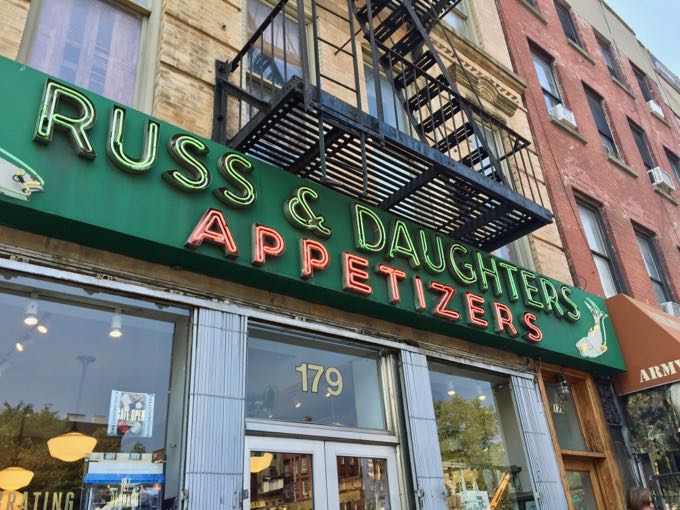
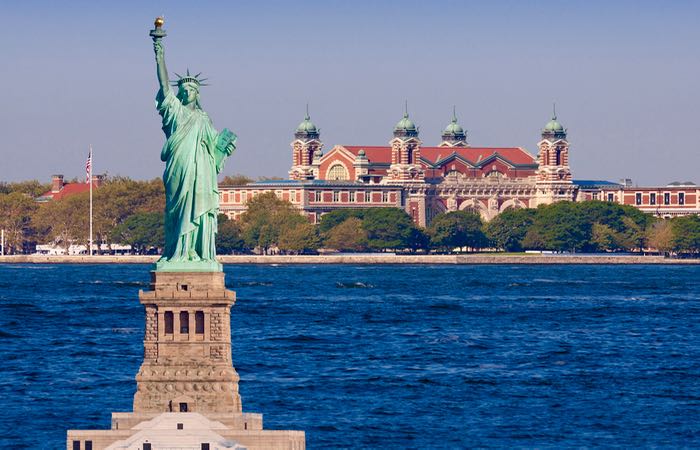
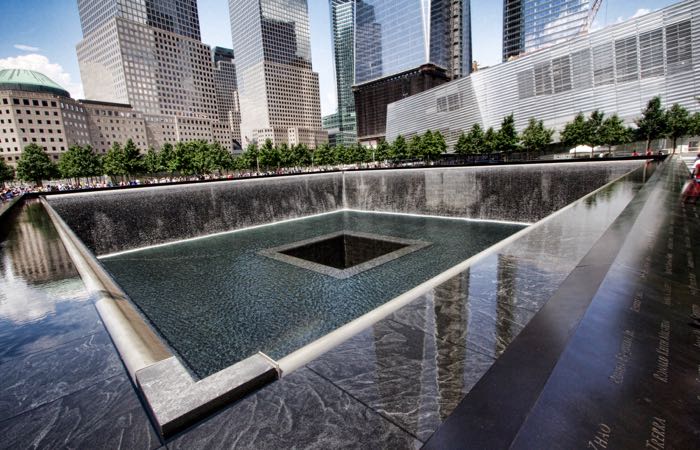
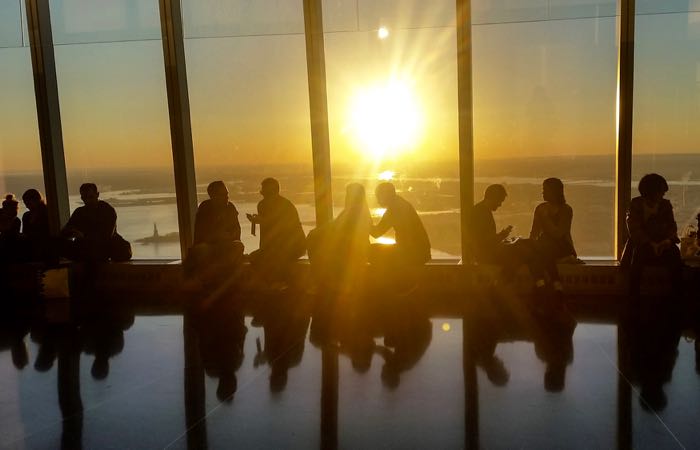
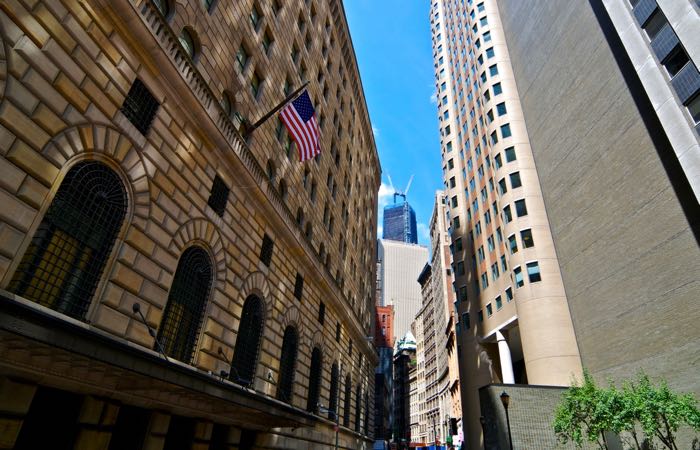
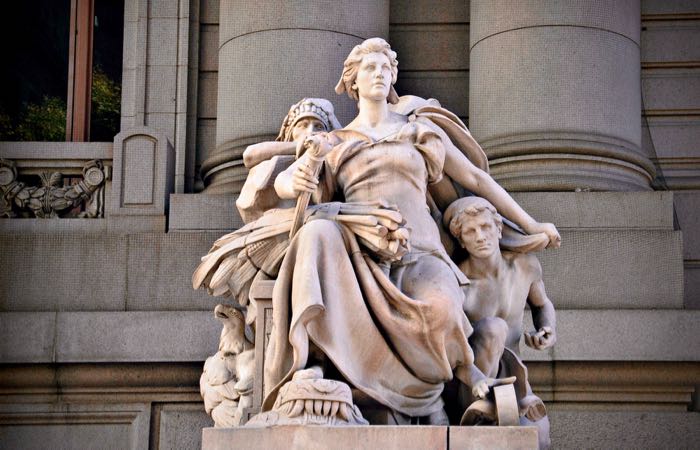
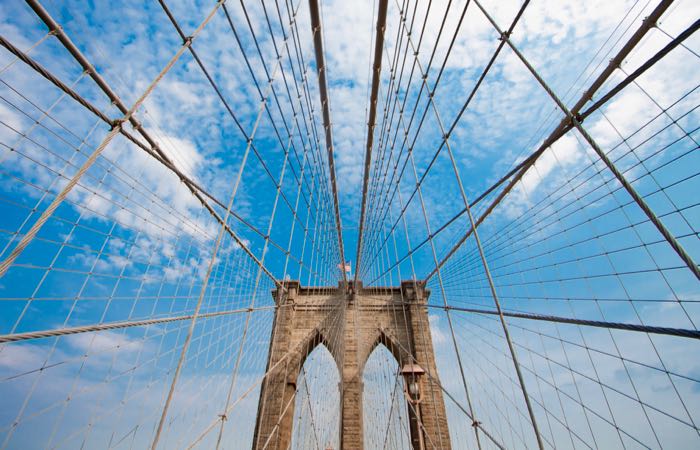
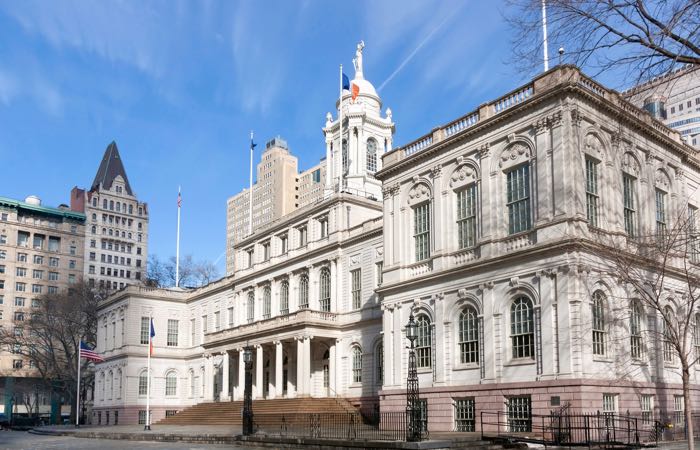
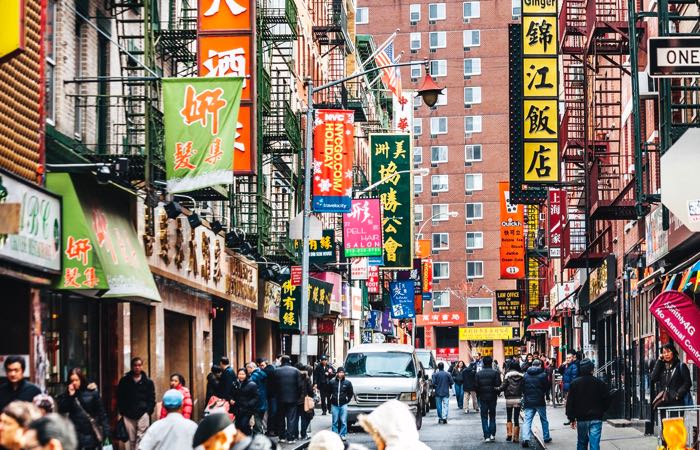
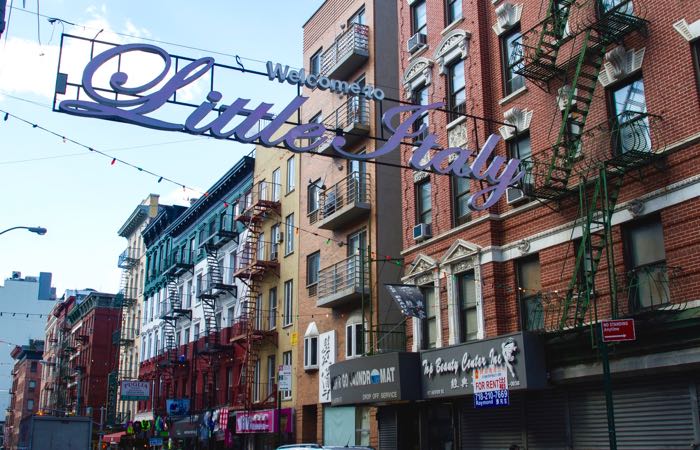
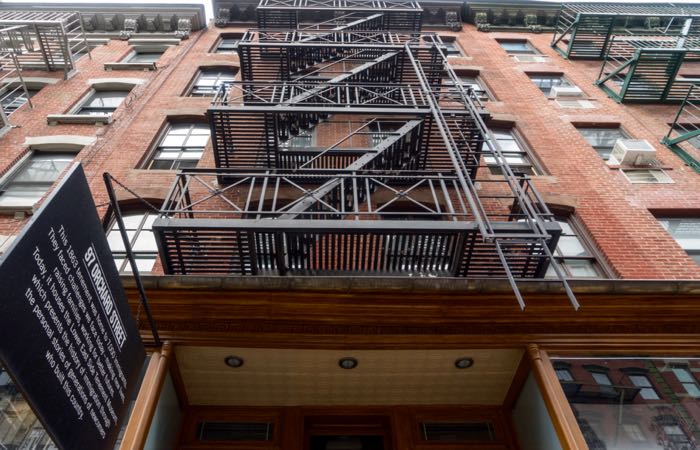
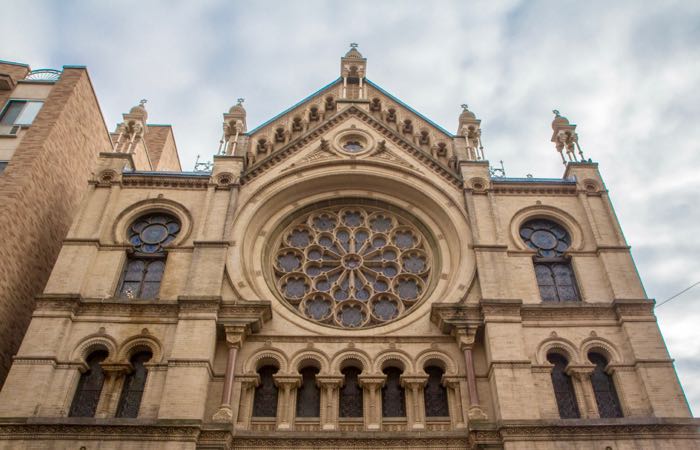
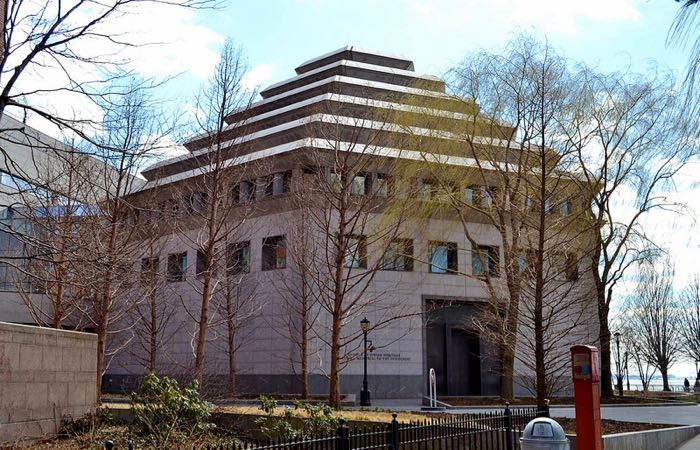
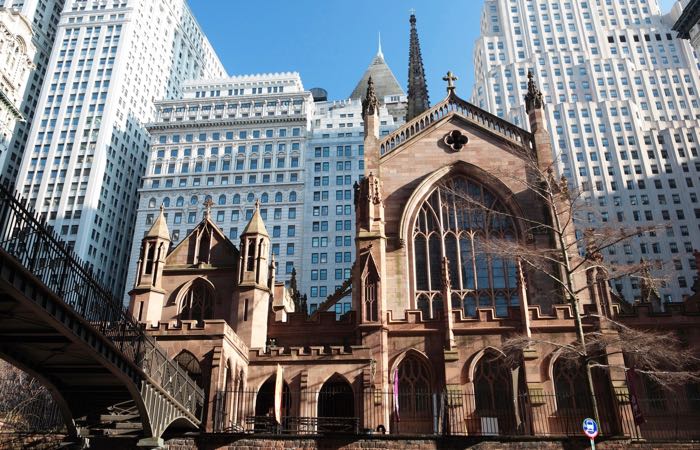
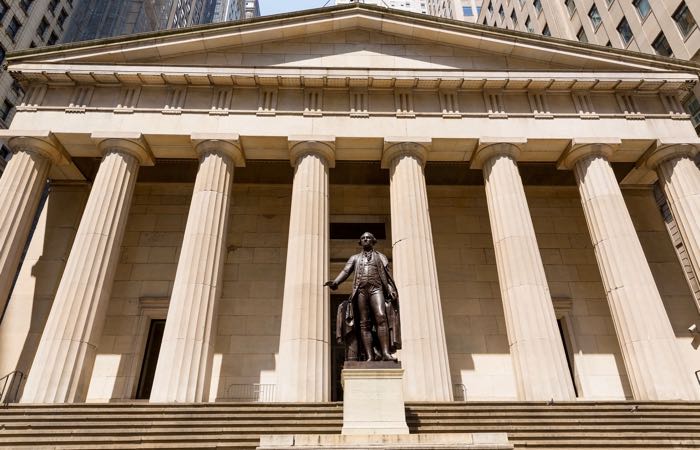
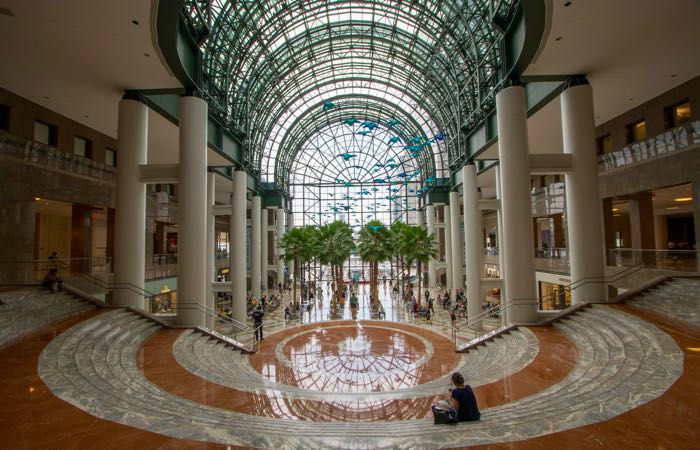
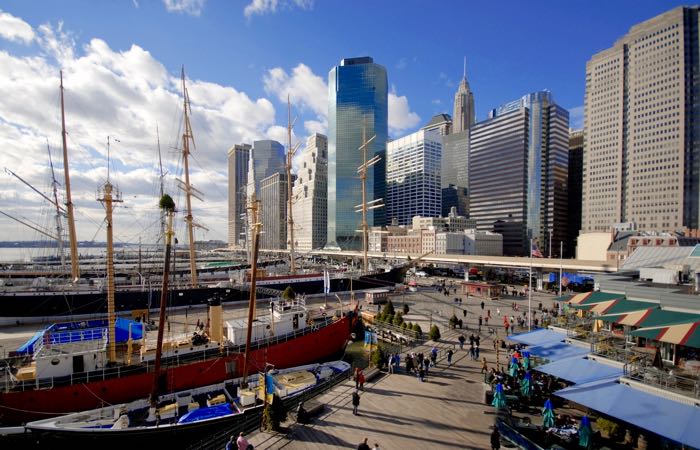
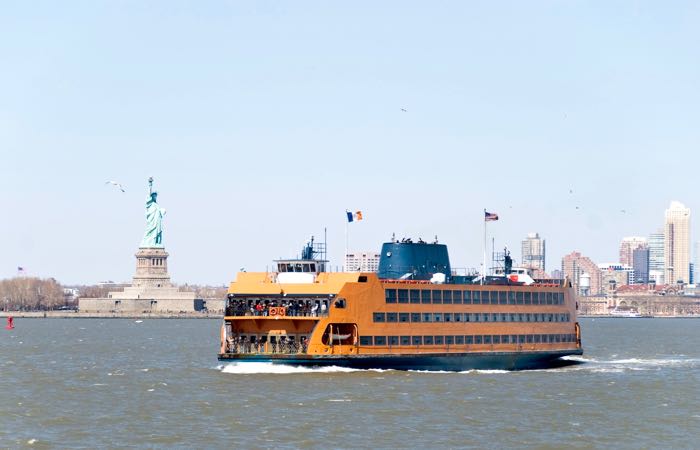
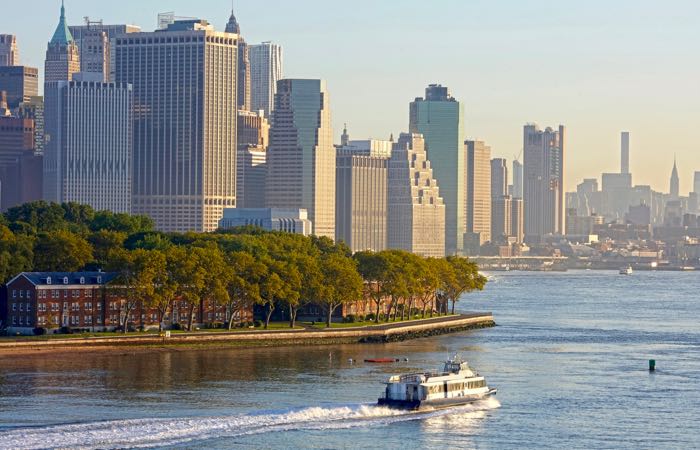
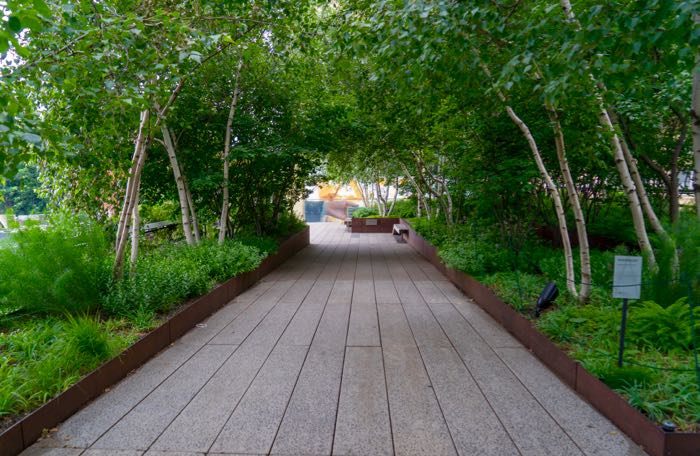
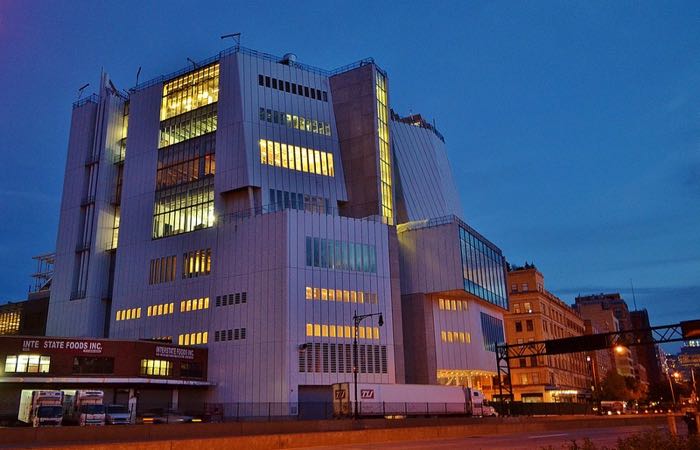

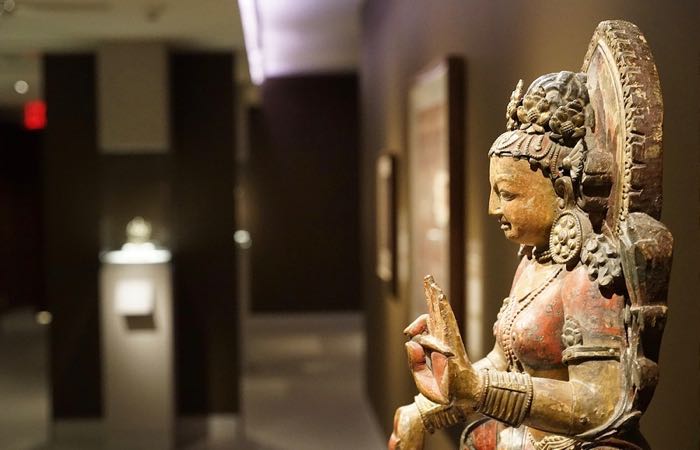
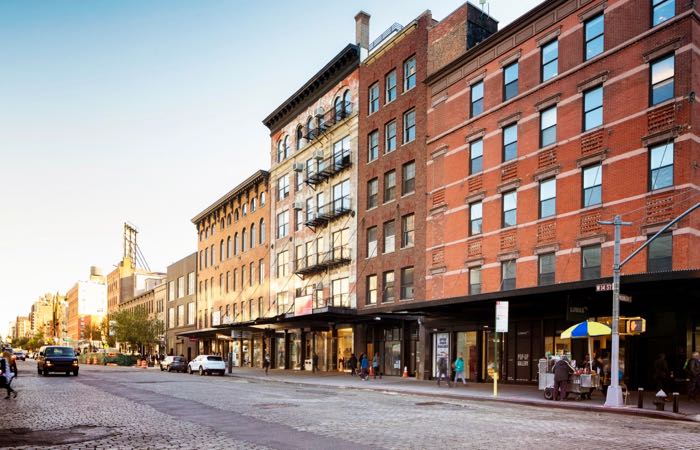
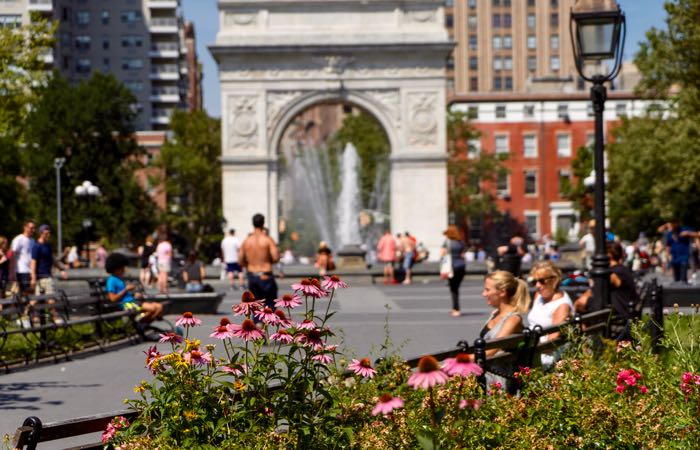
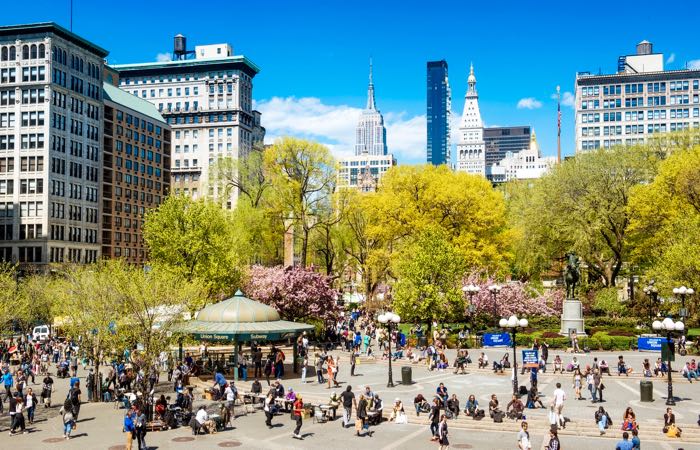

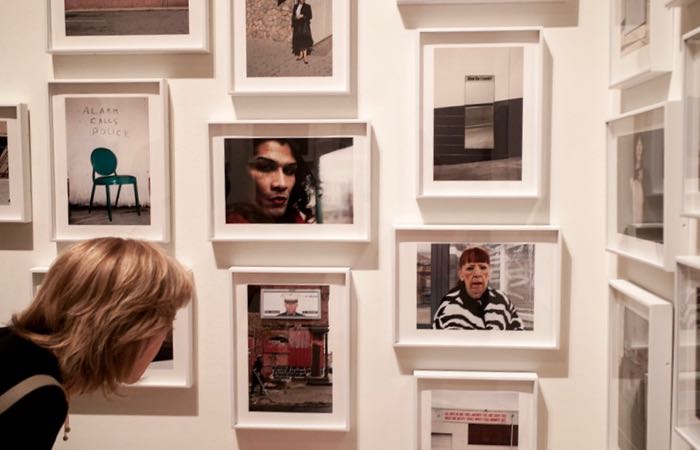
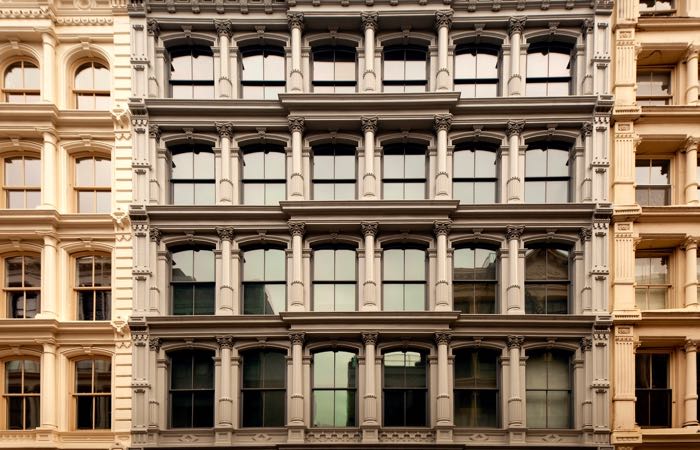
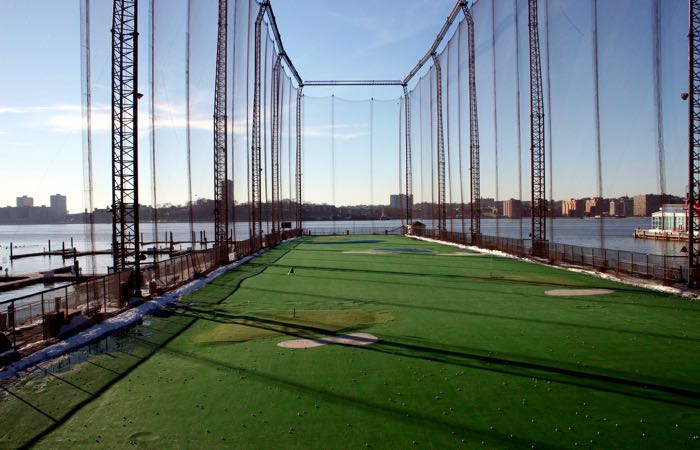

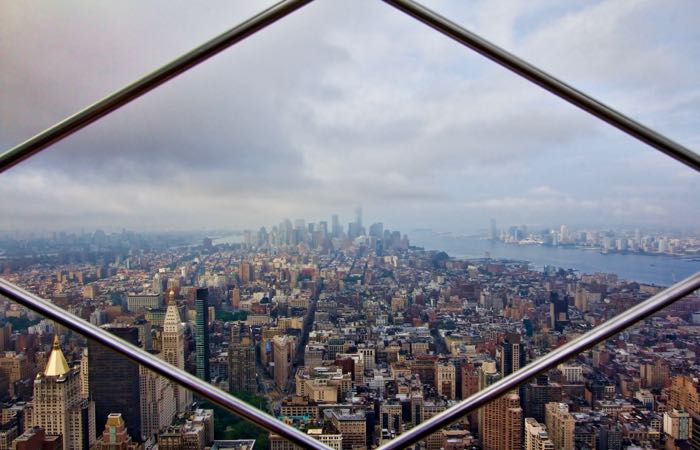
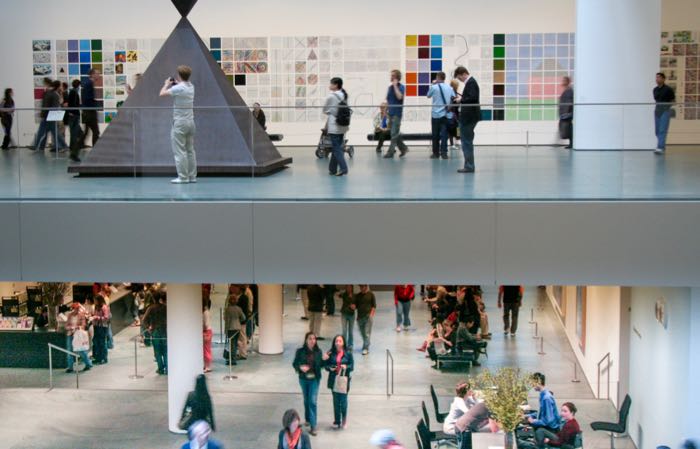
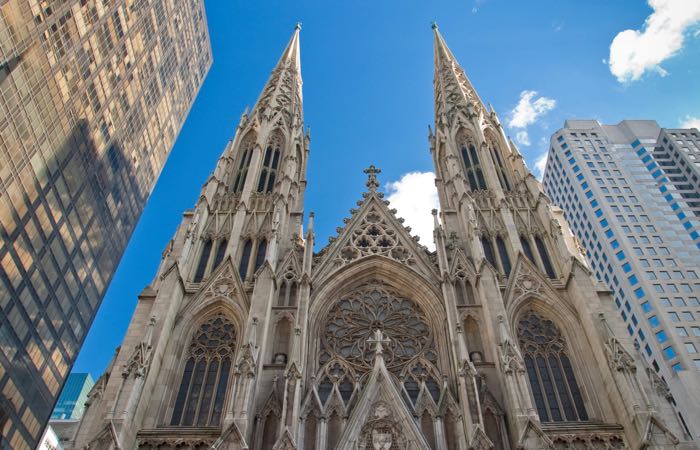
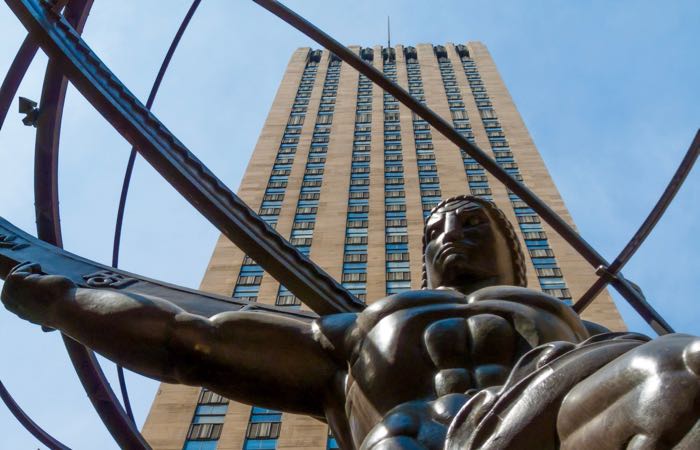
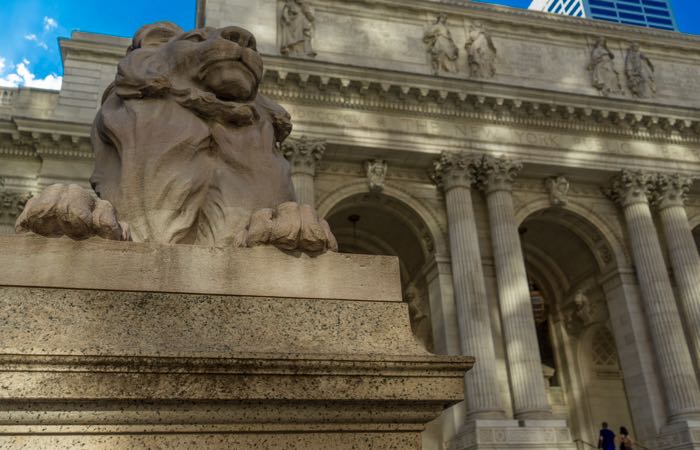
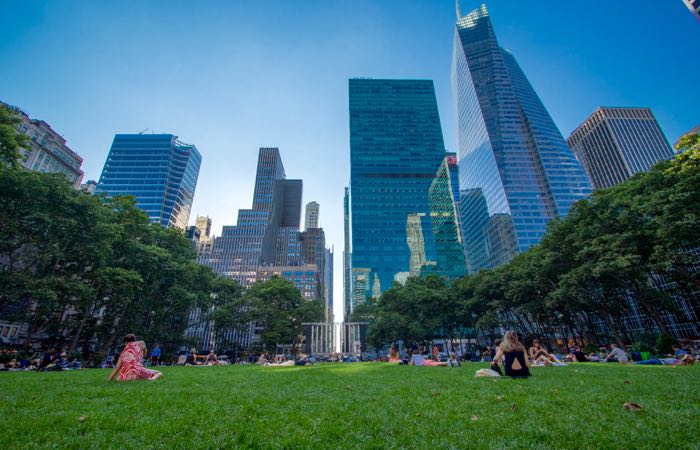
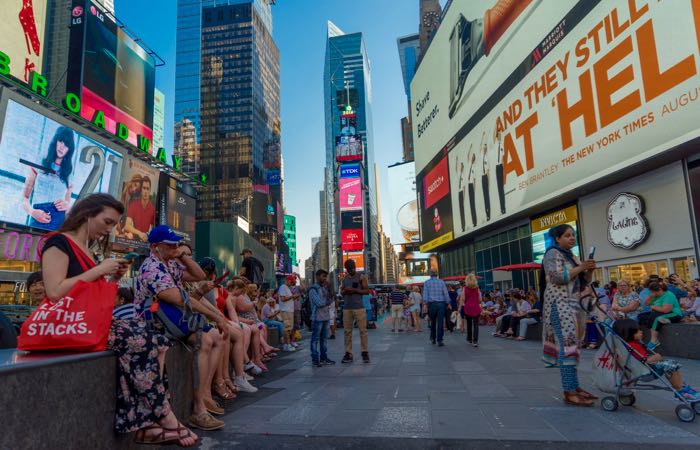
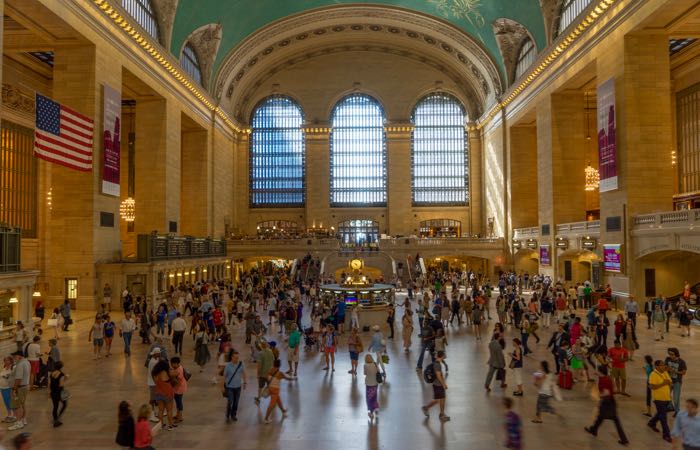
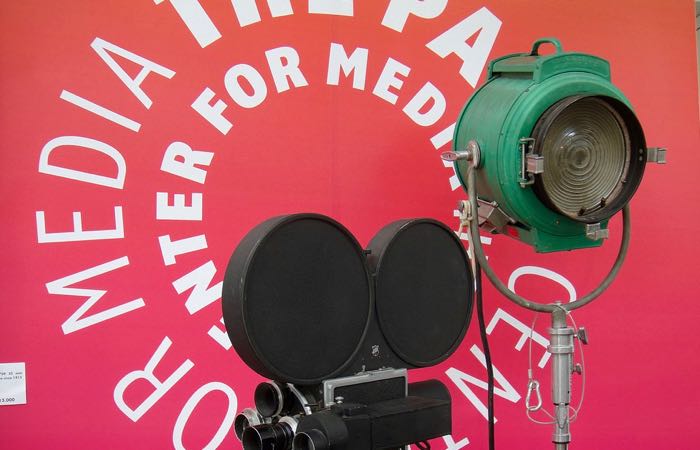
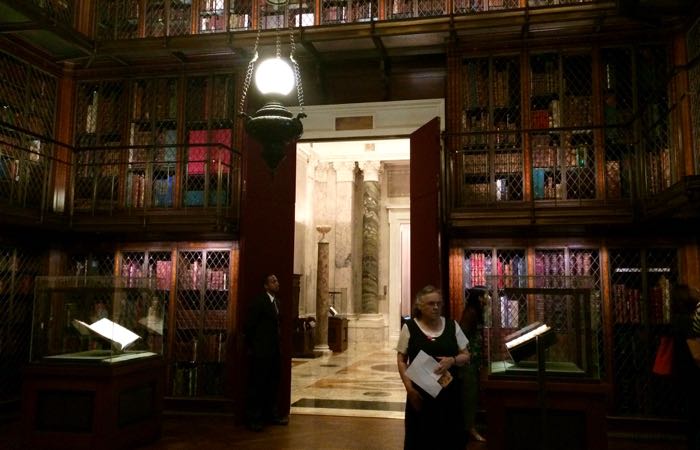
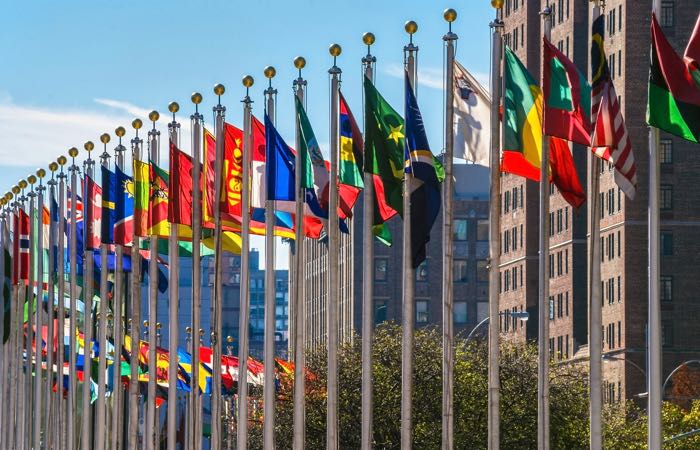
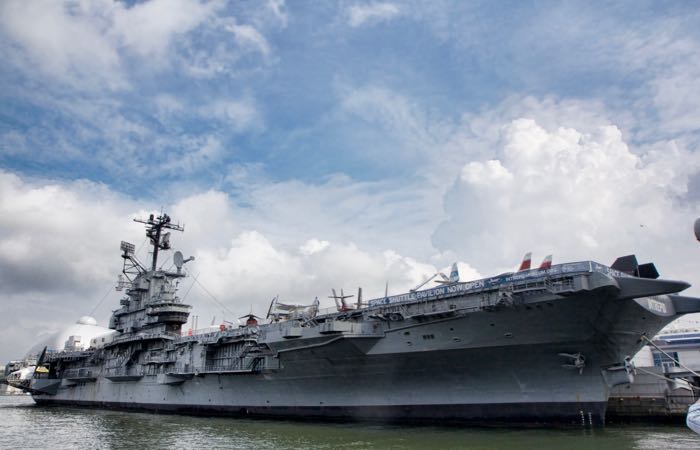
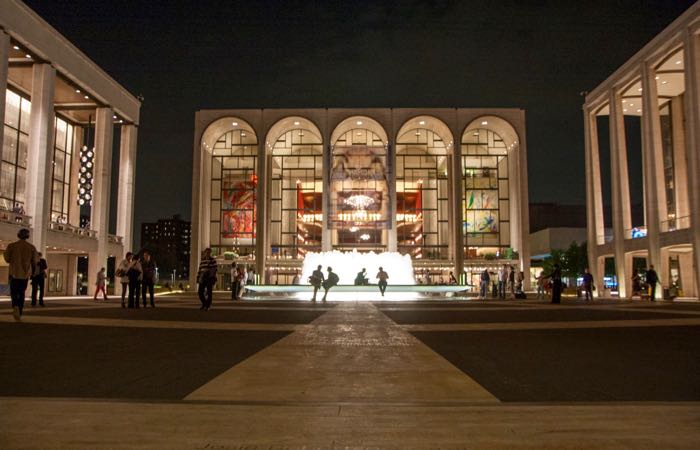
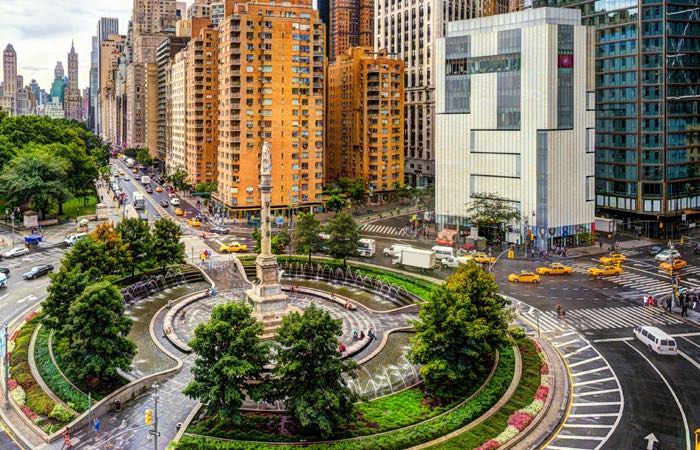
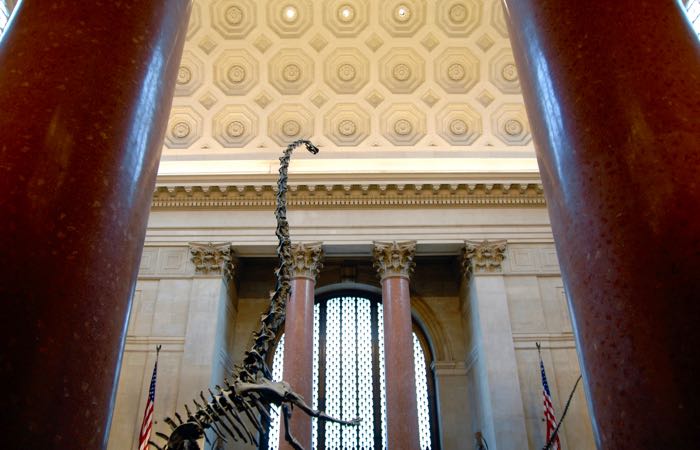
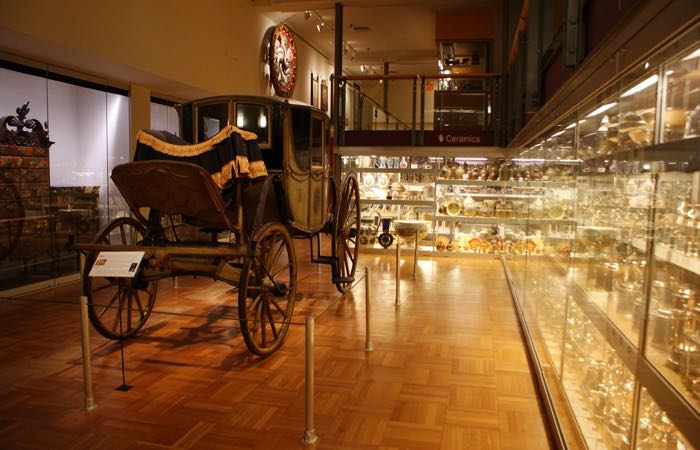
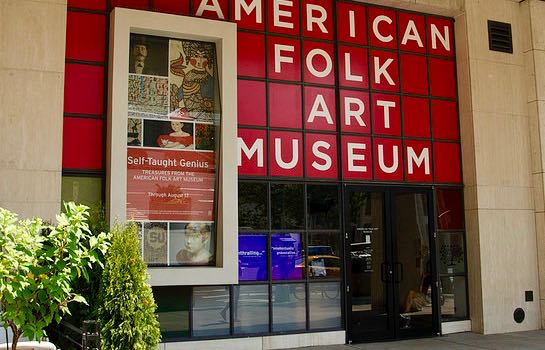
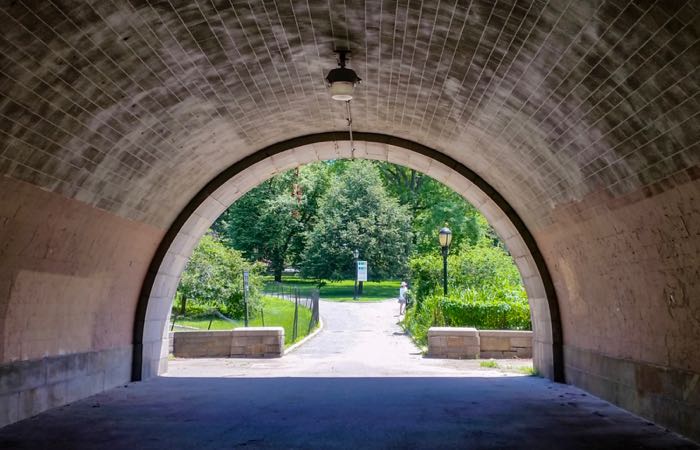
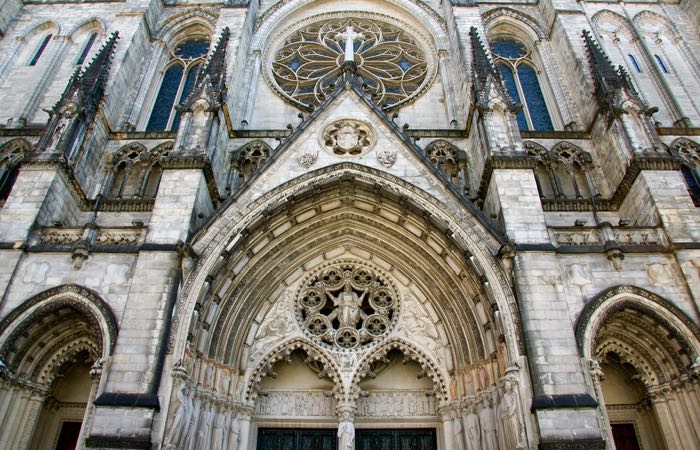
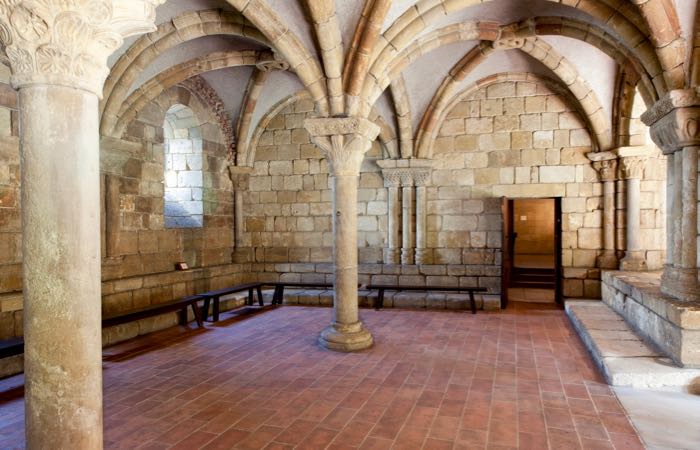

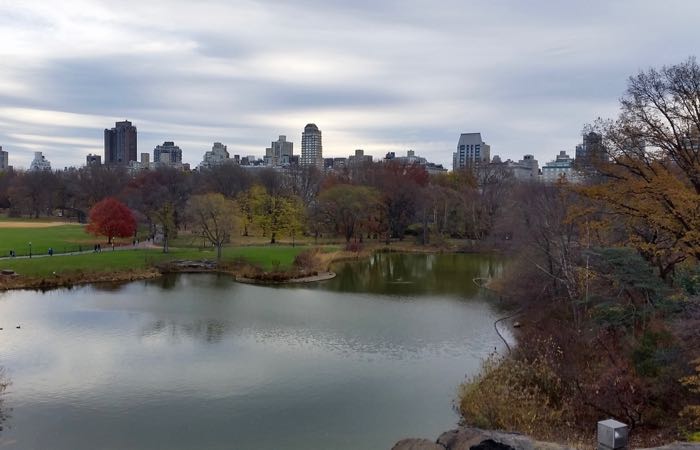
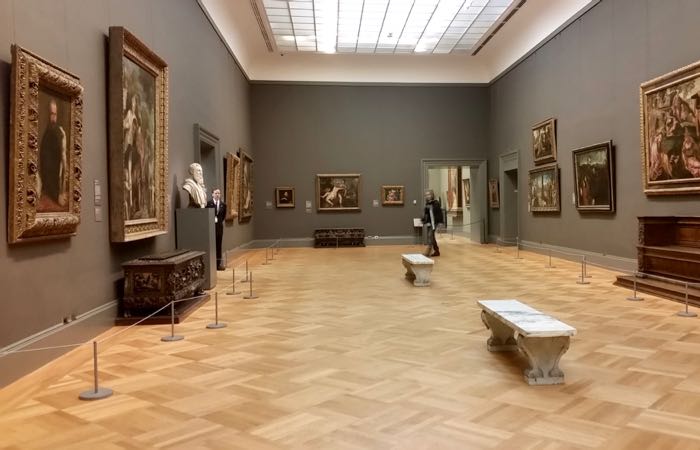
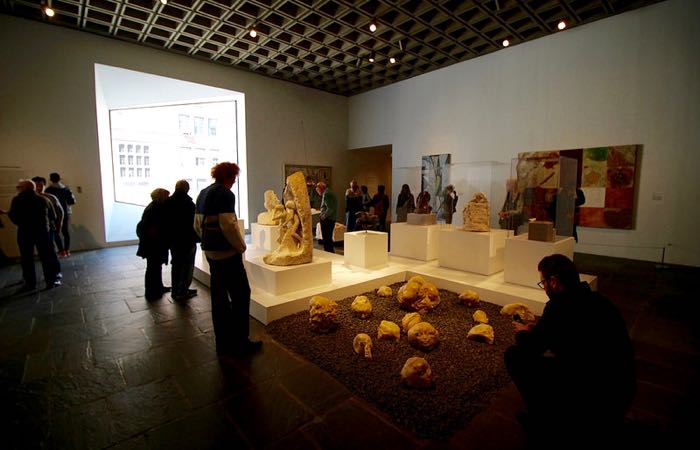
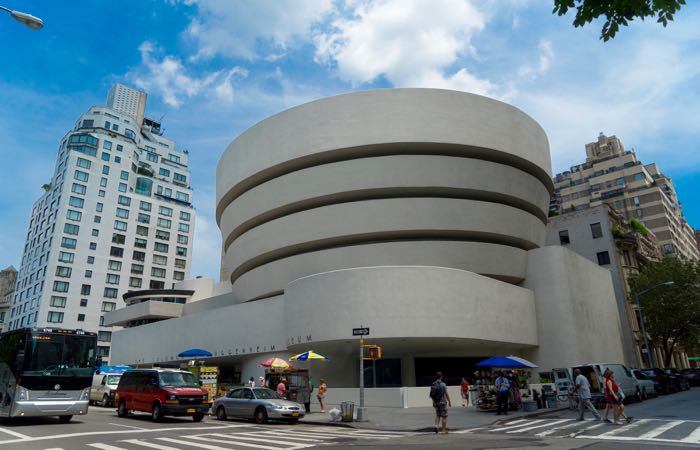
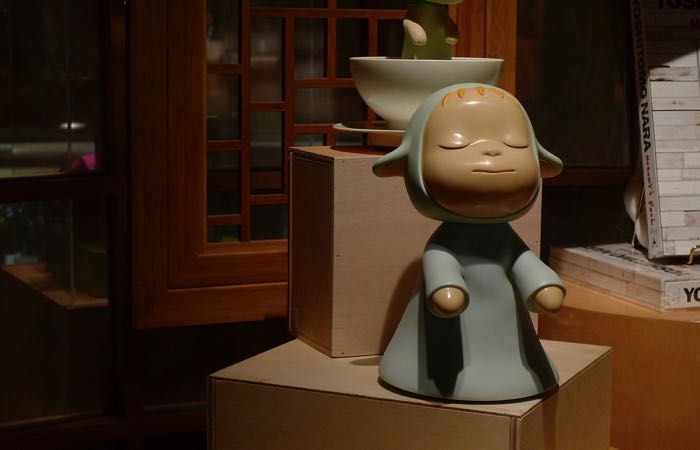
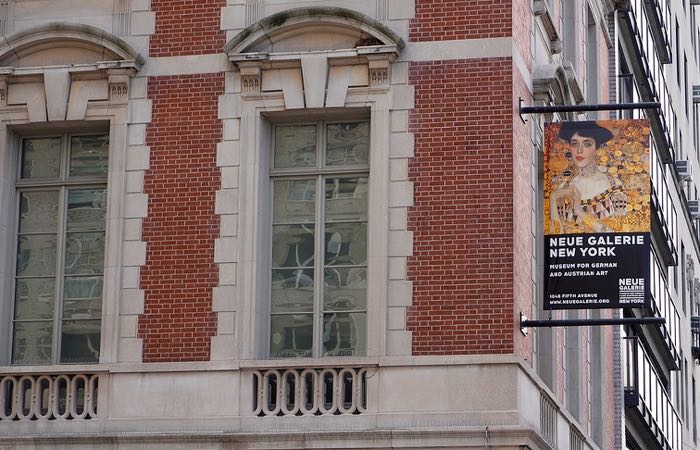
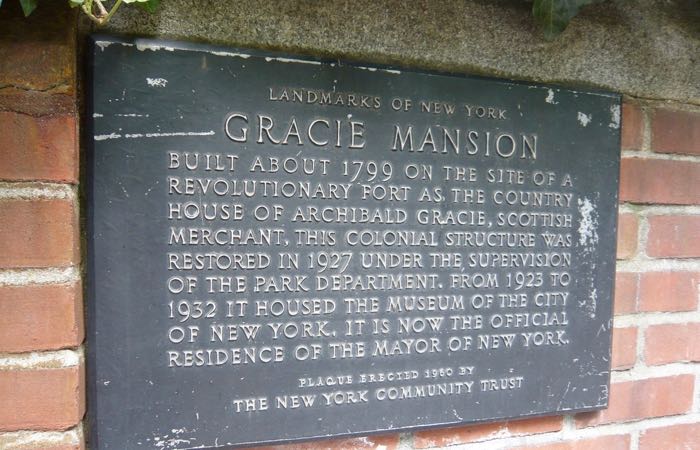
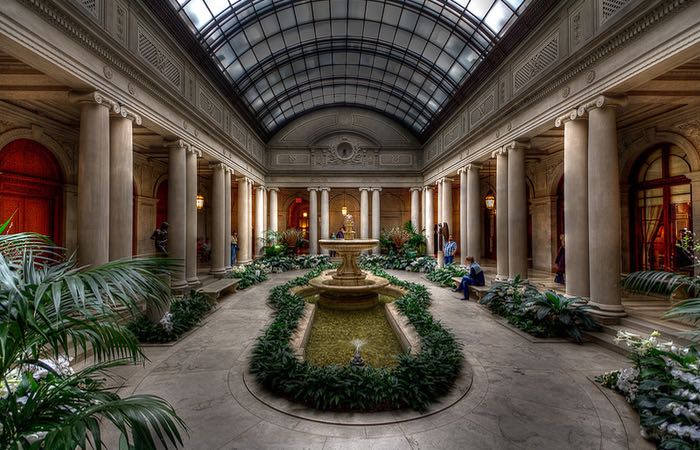
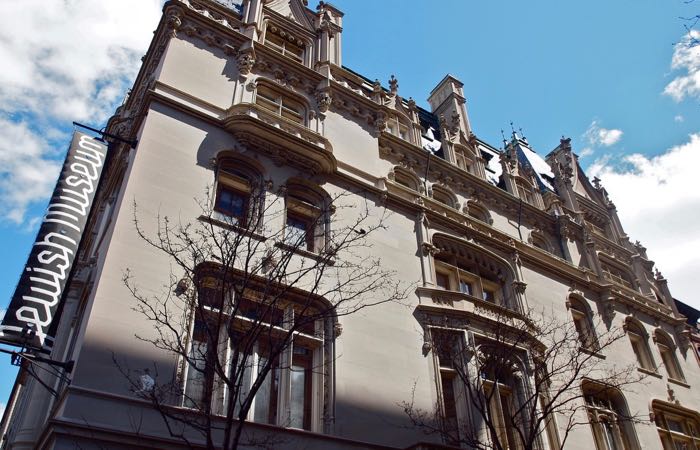
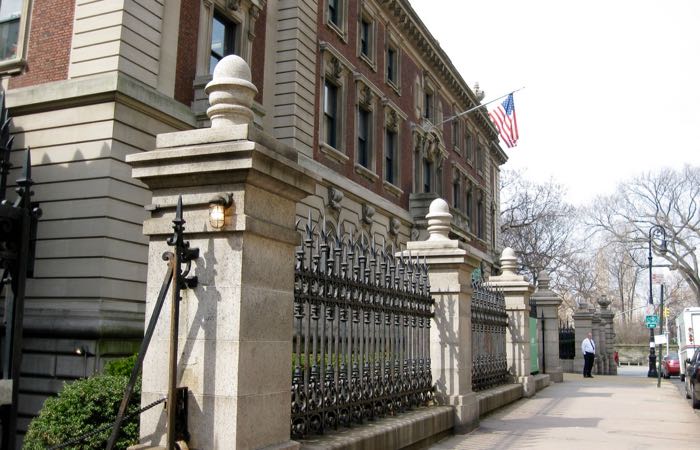
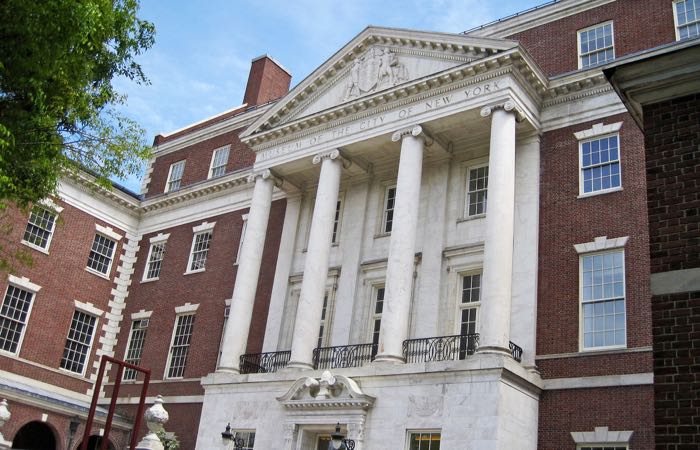
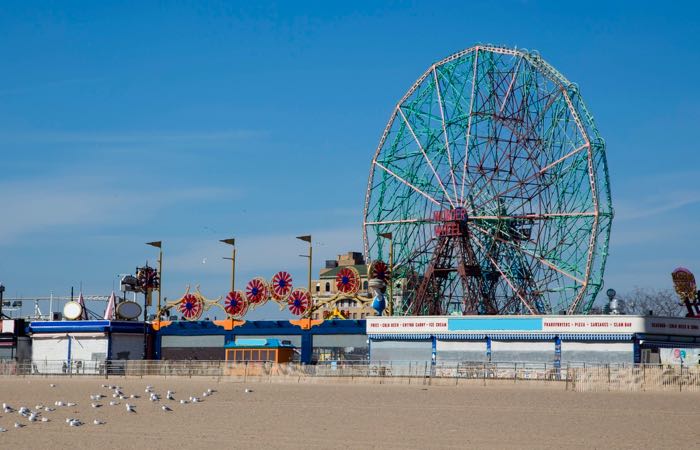
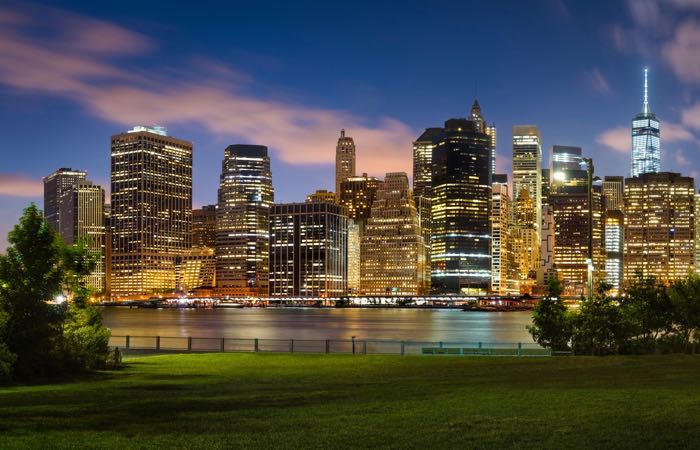
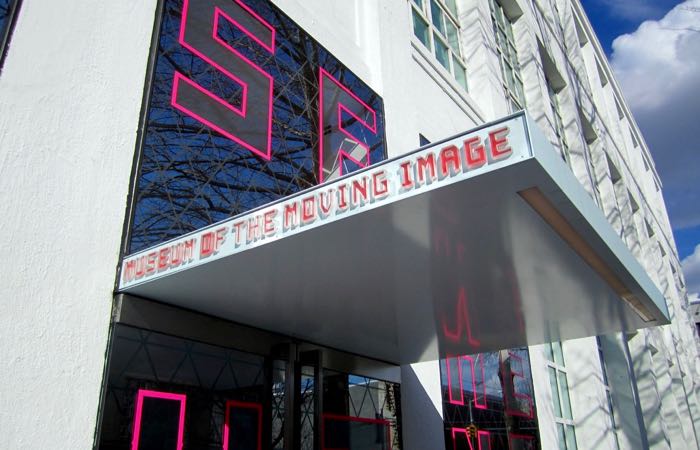

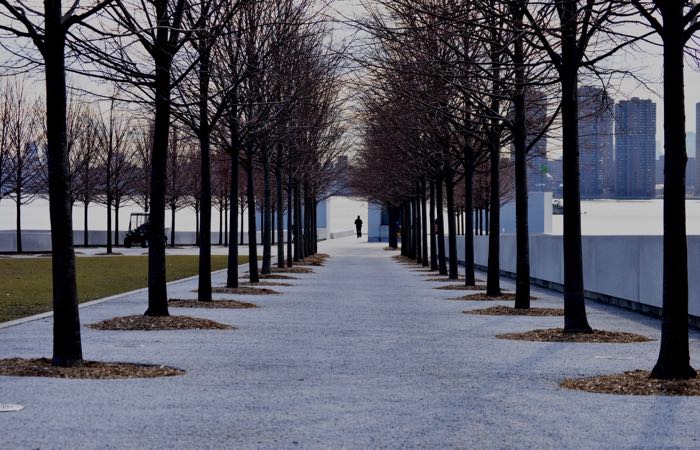

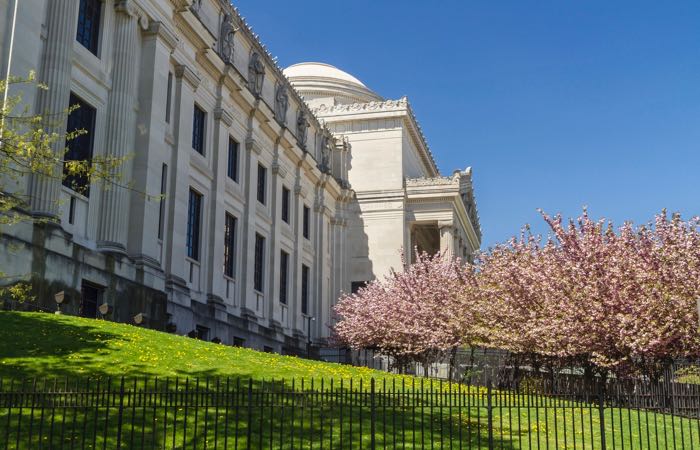
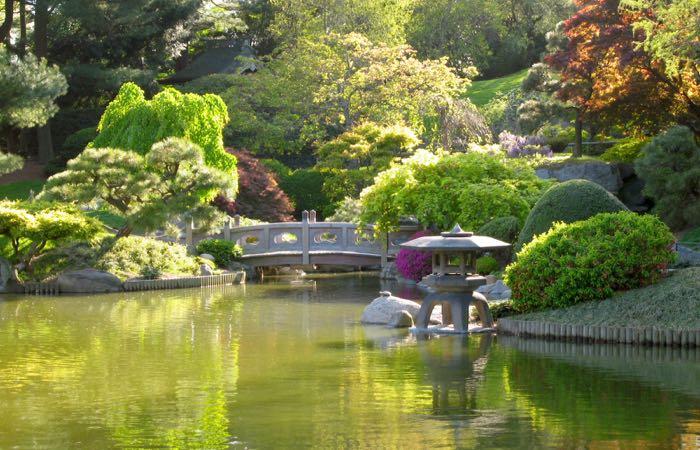
About Santorini Dave